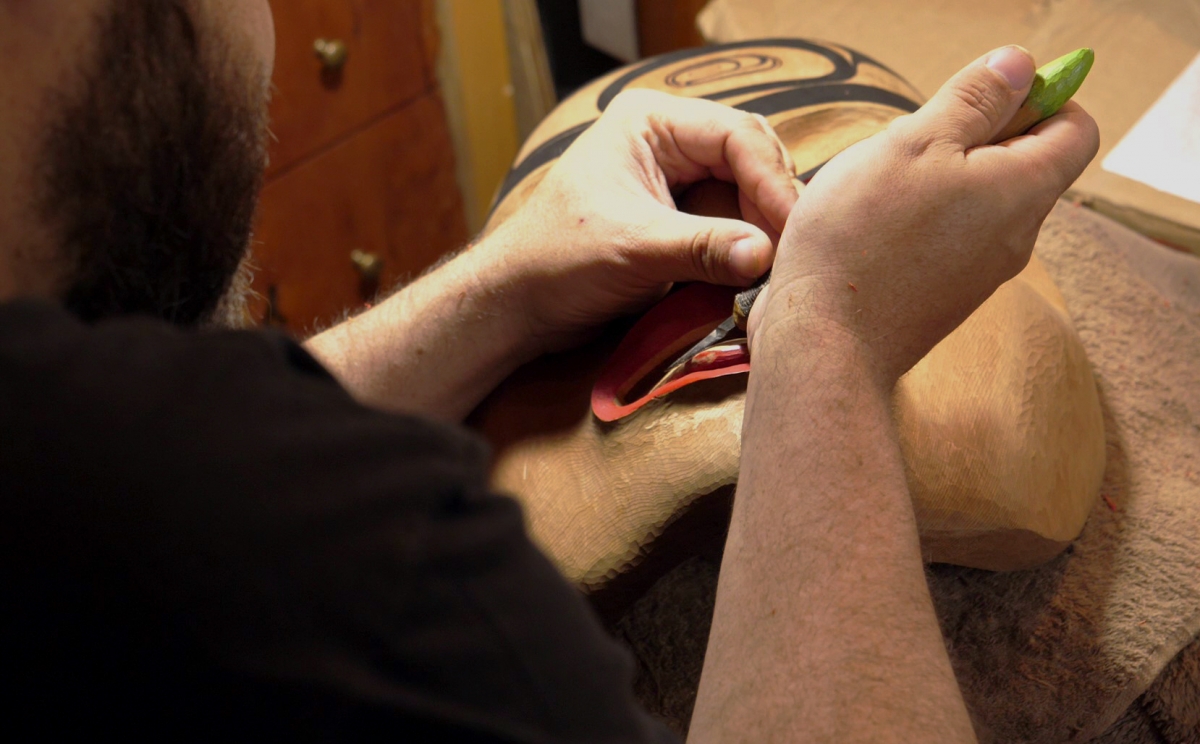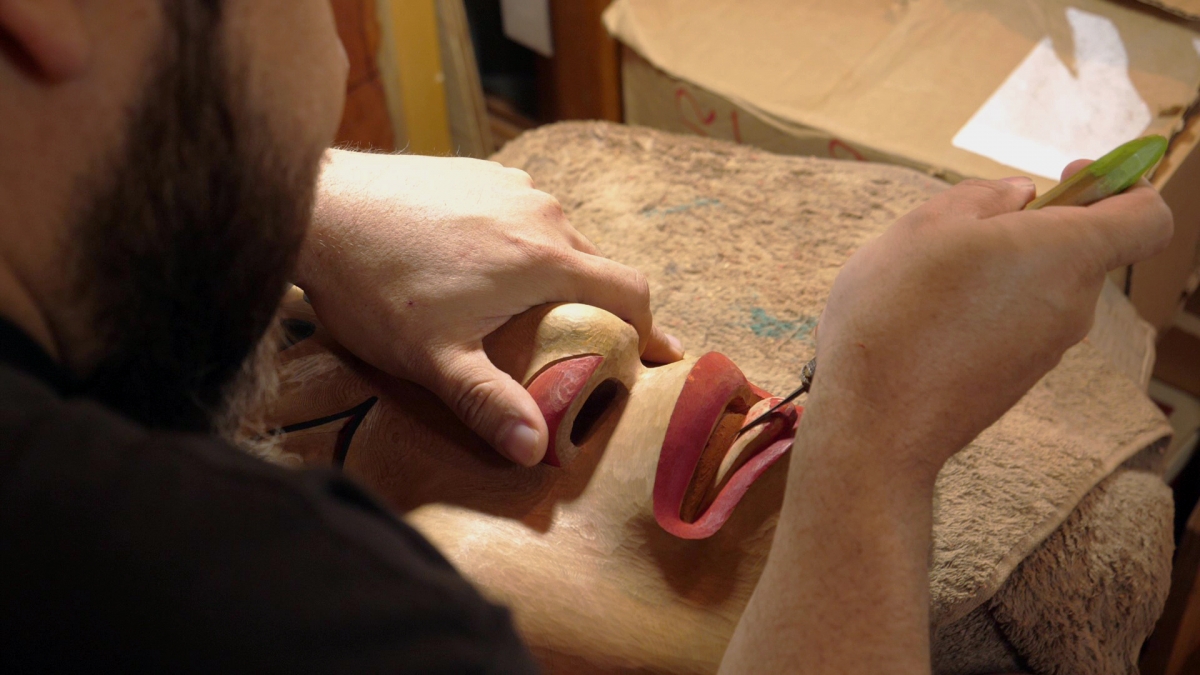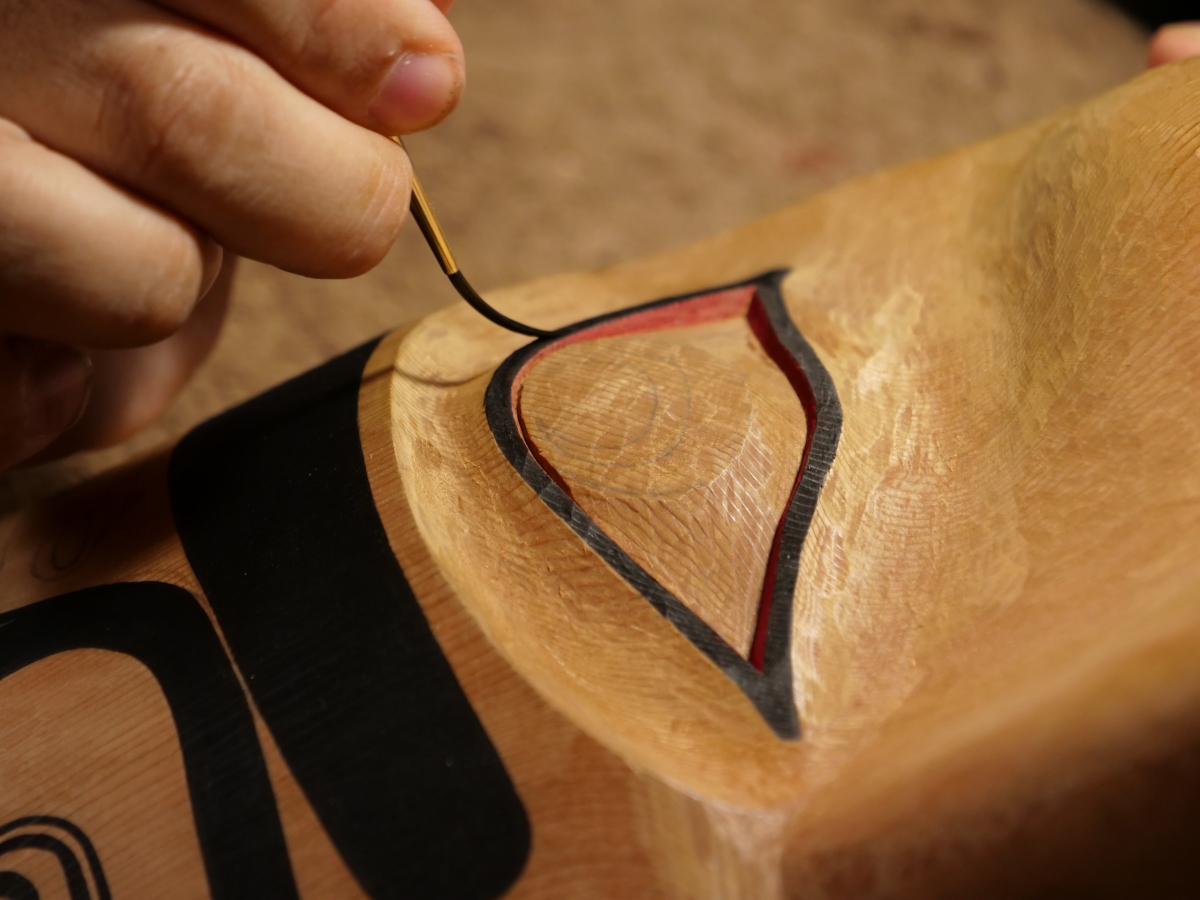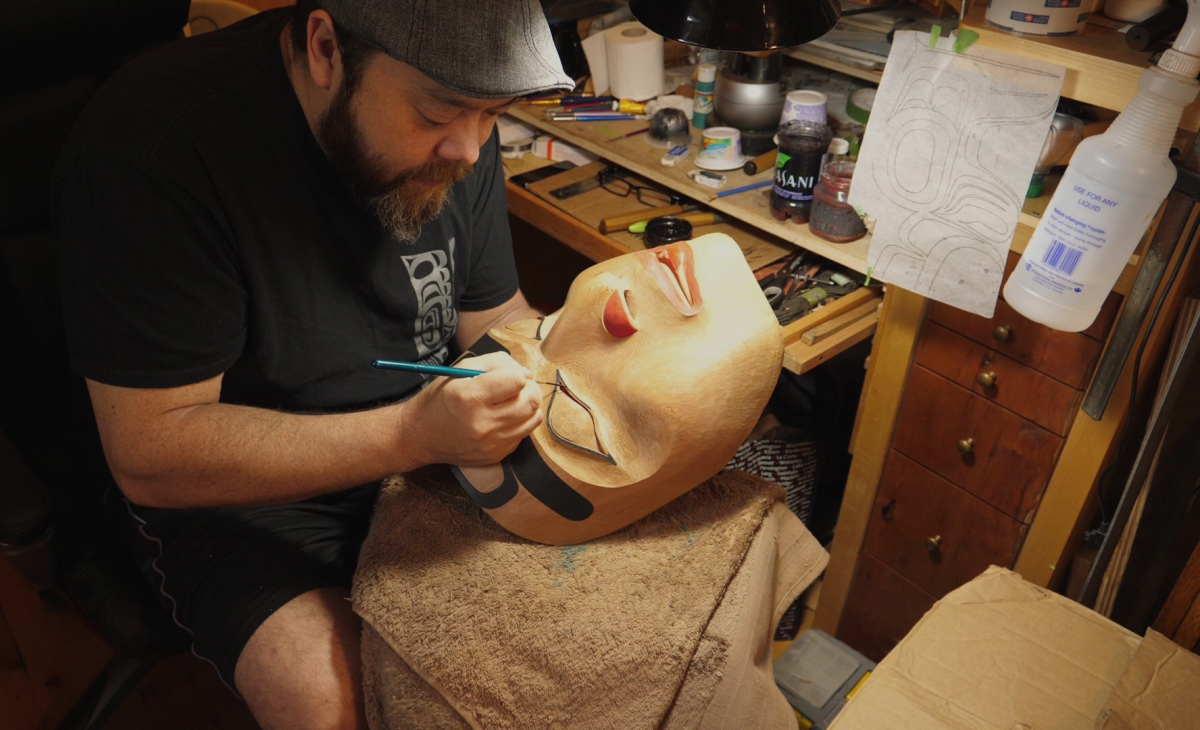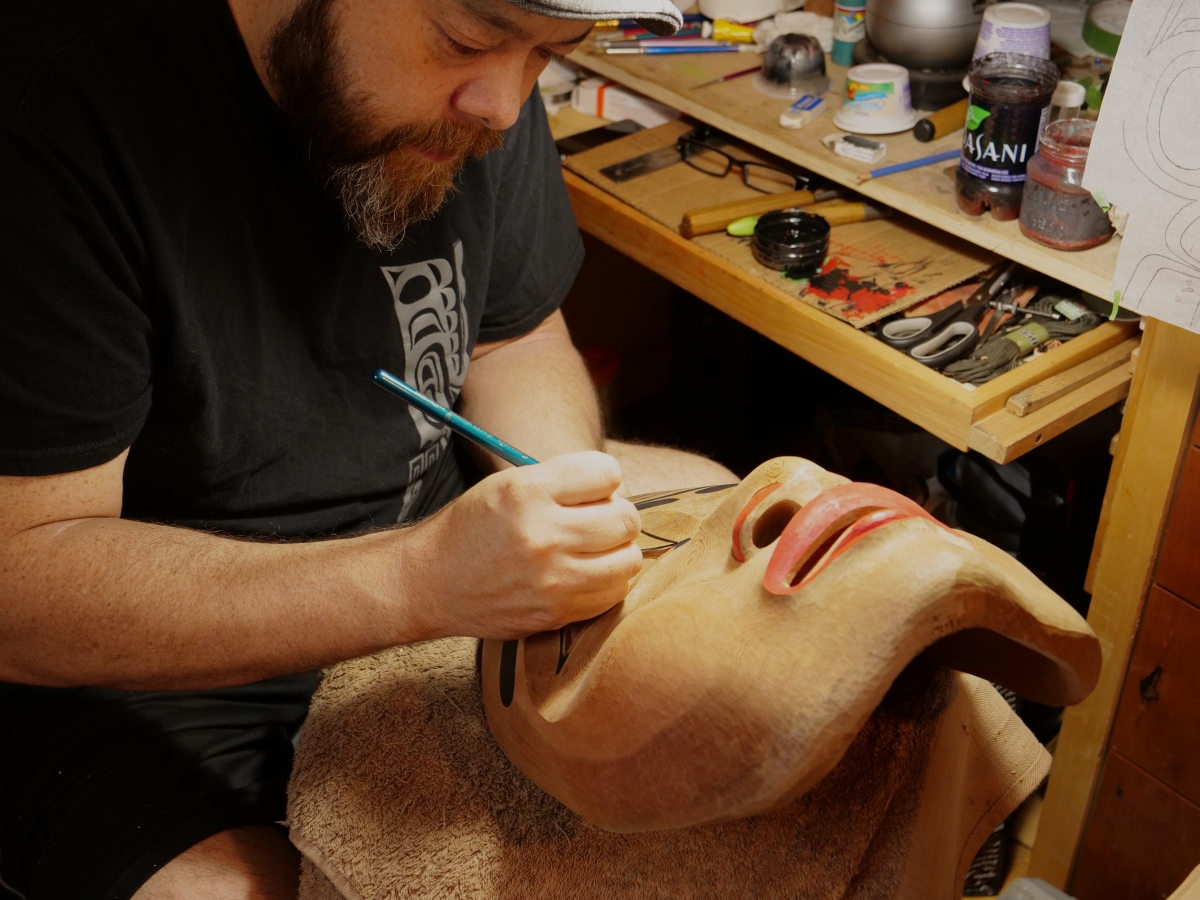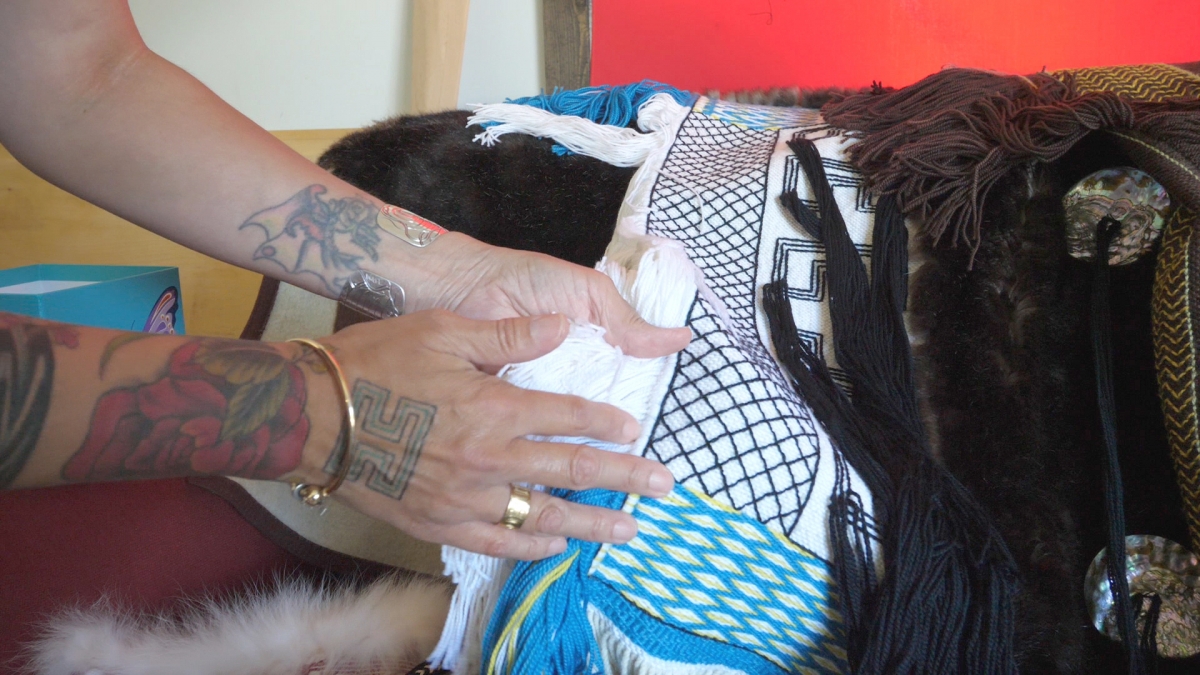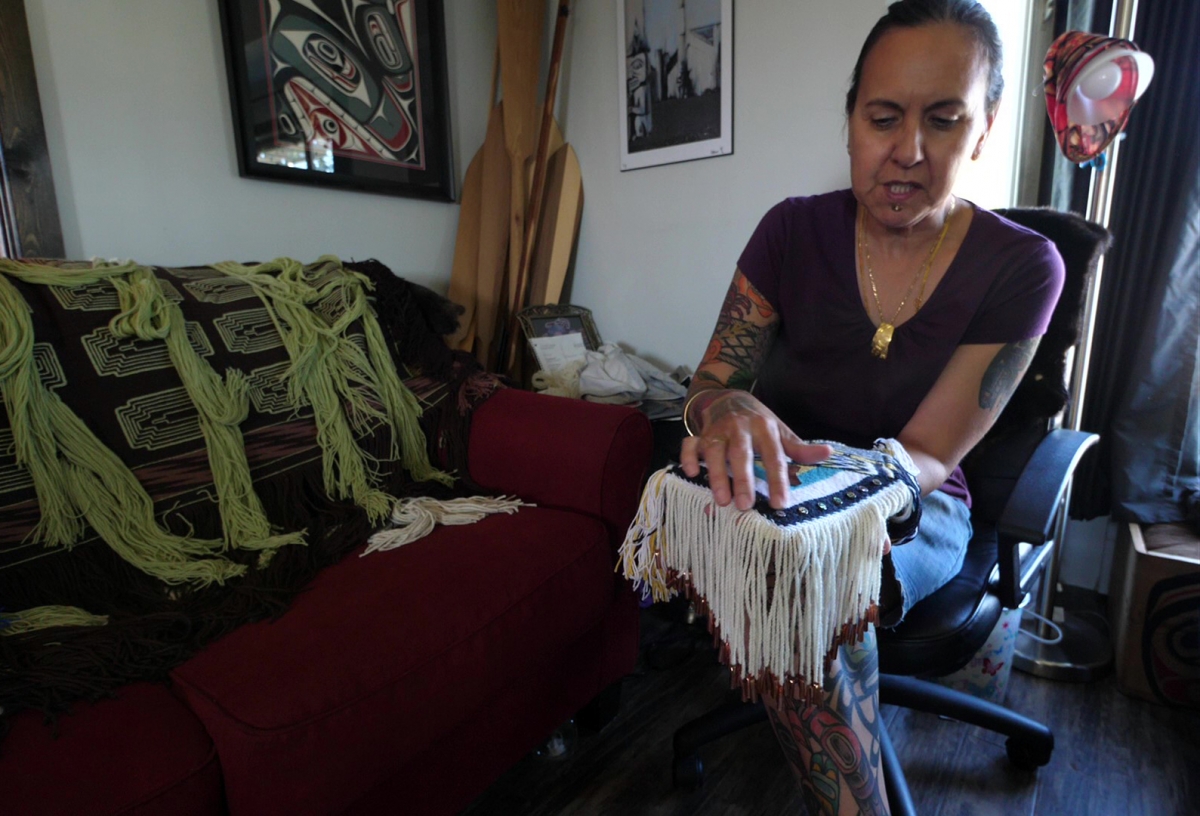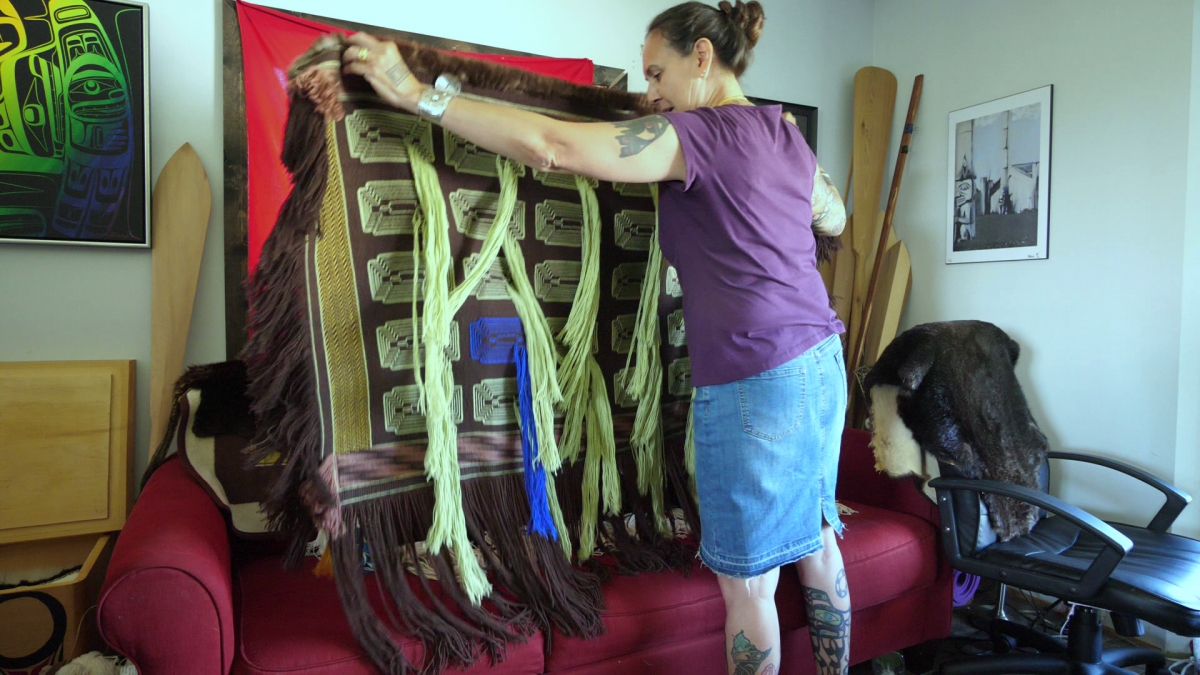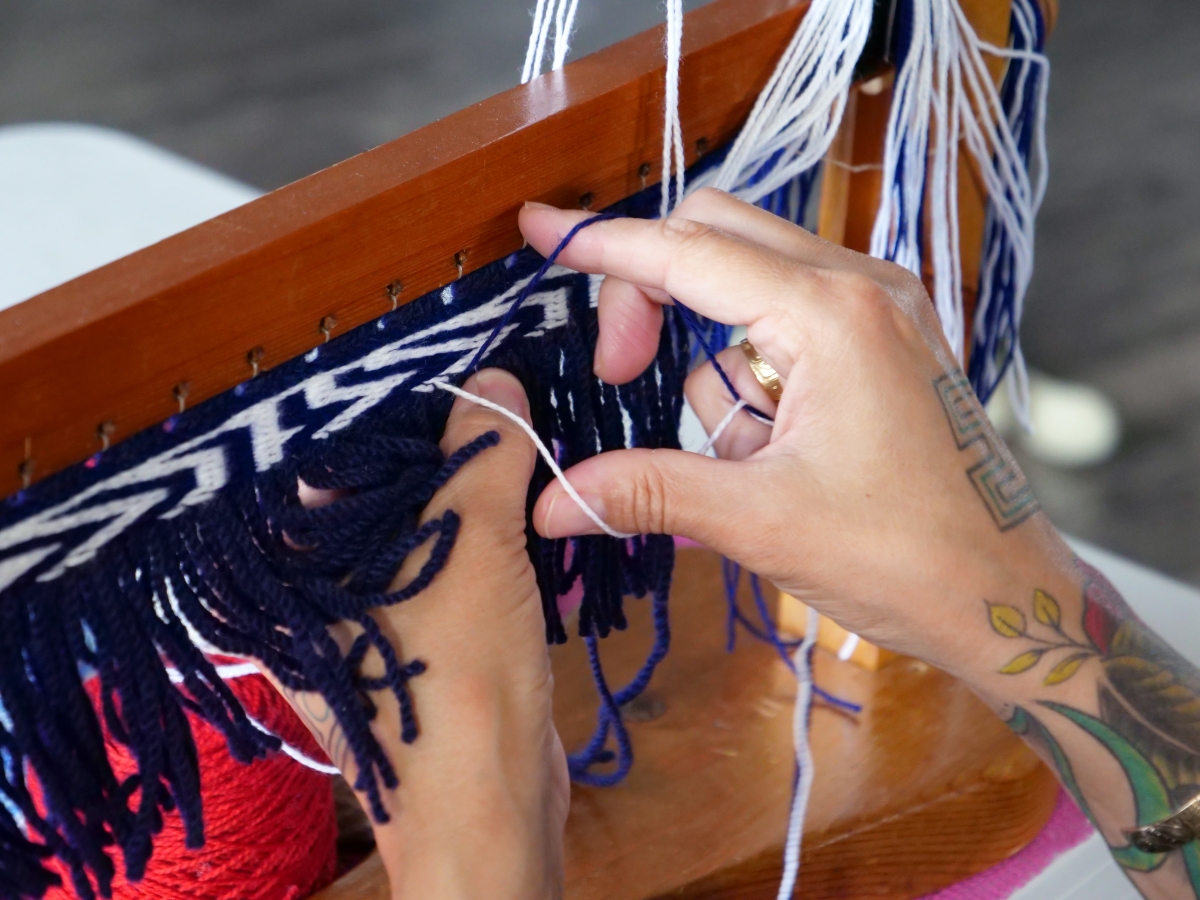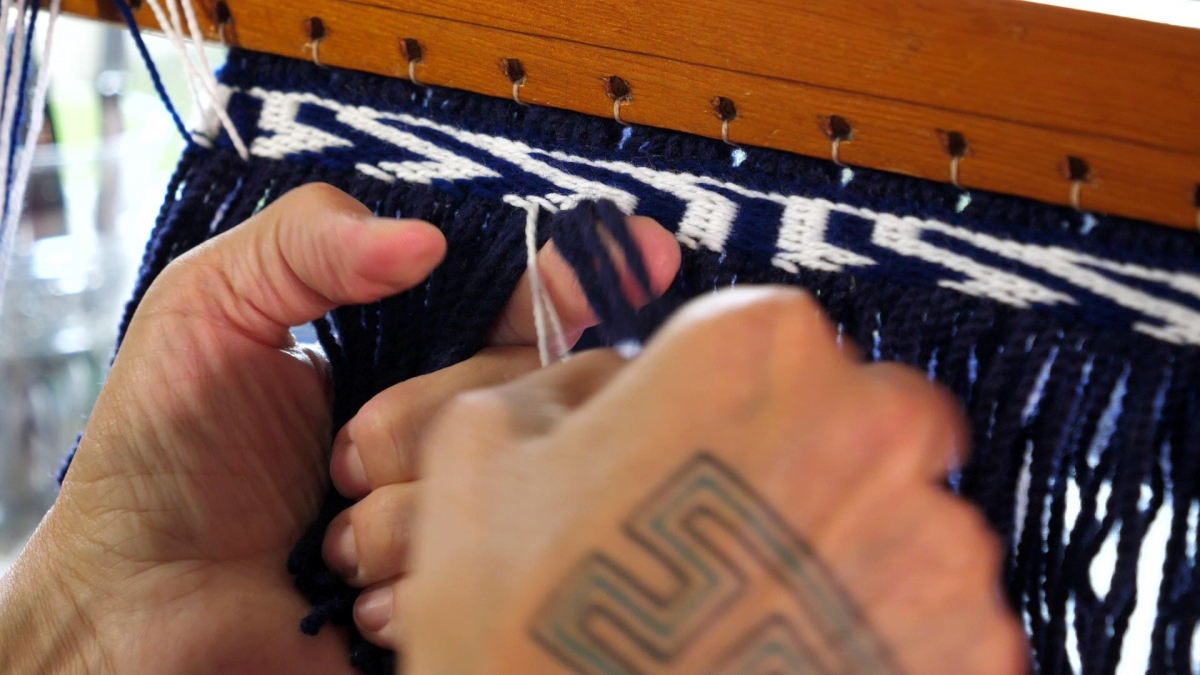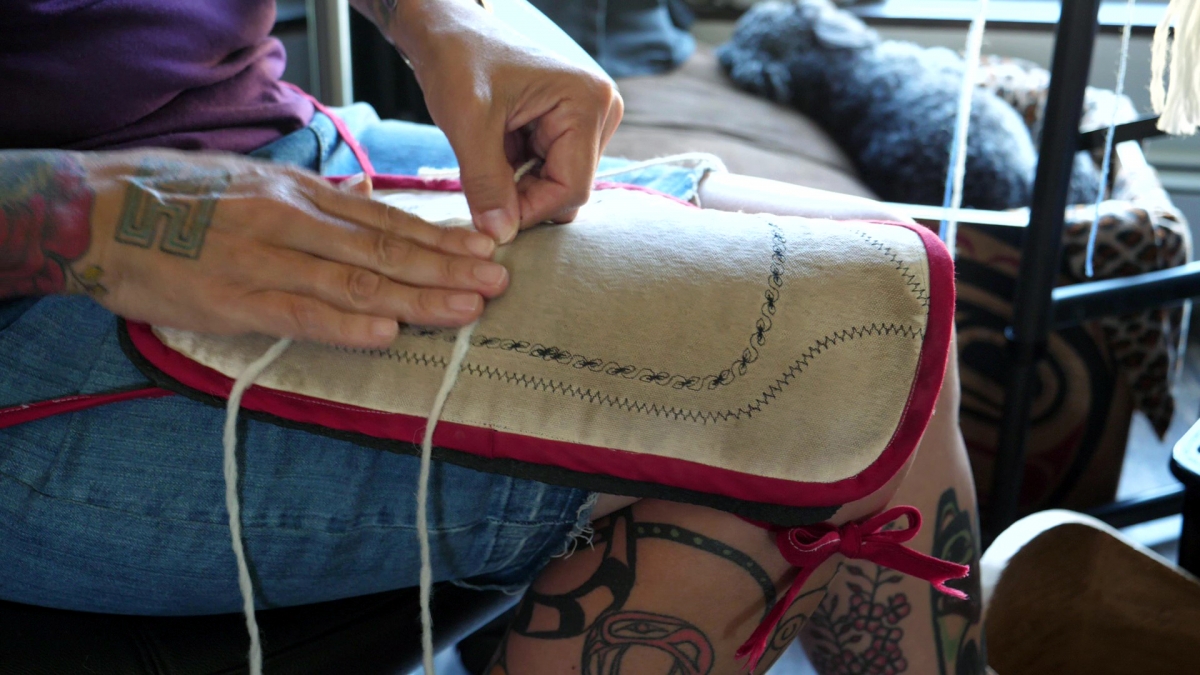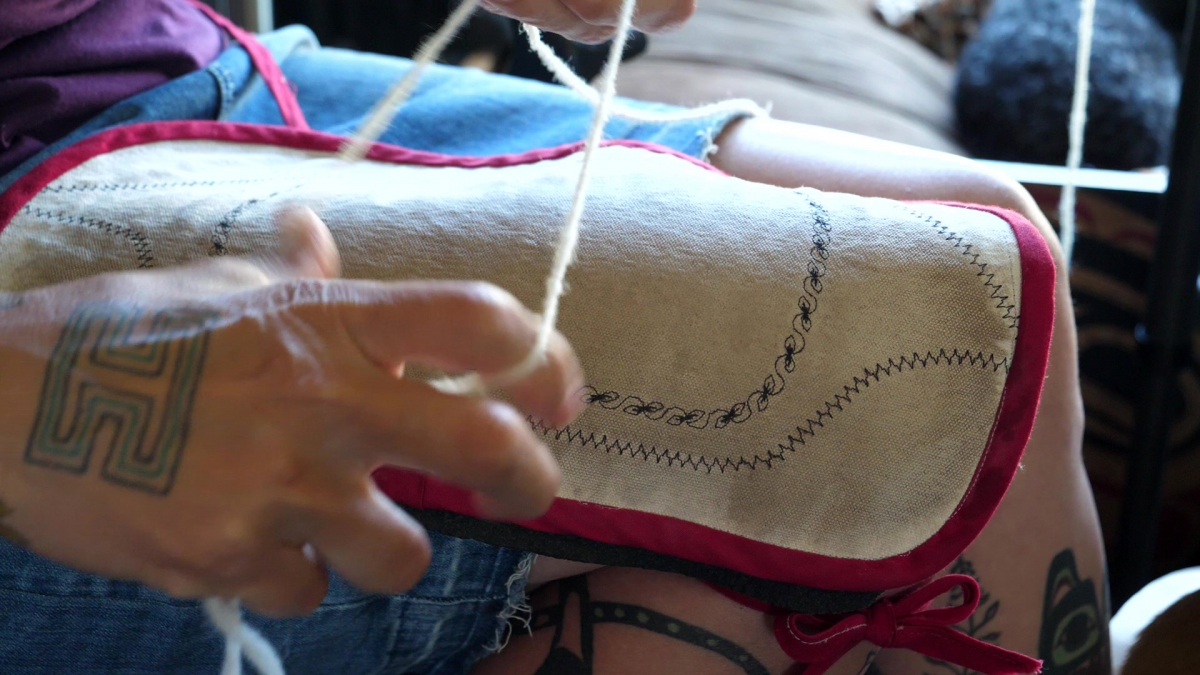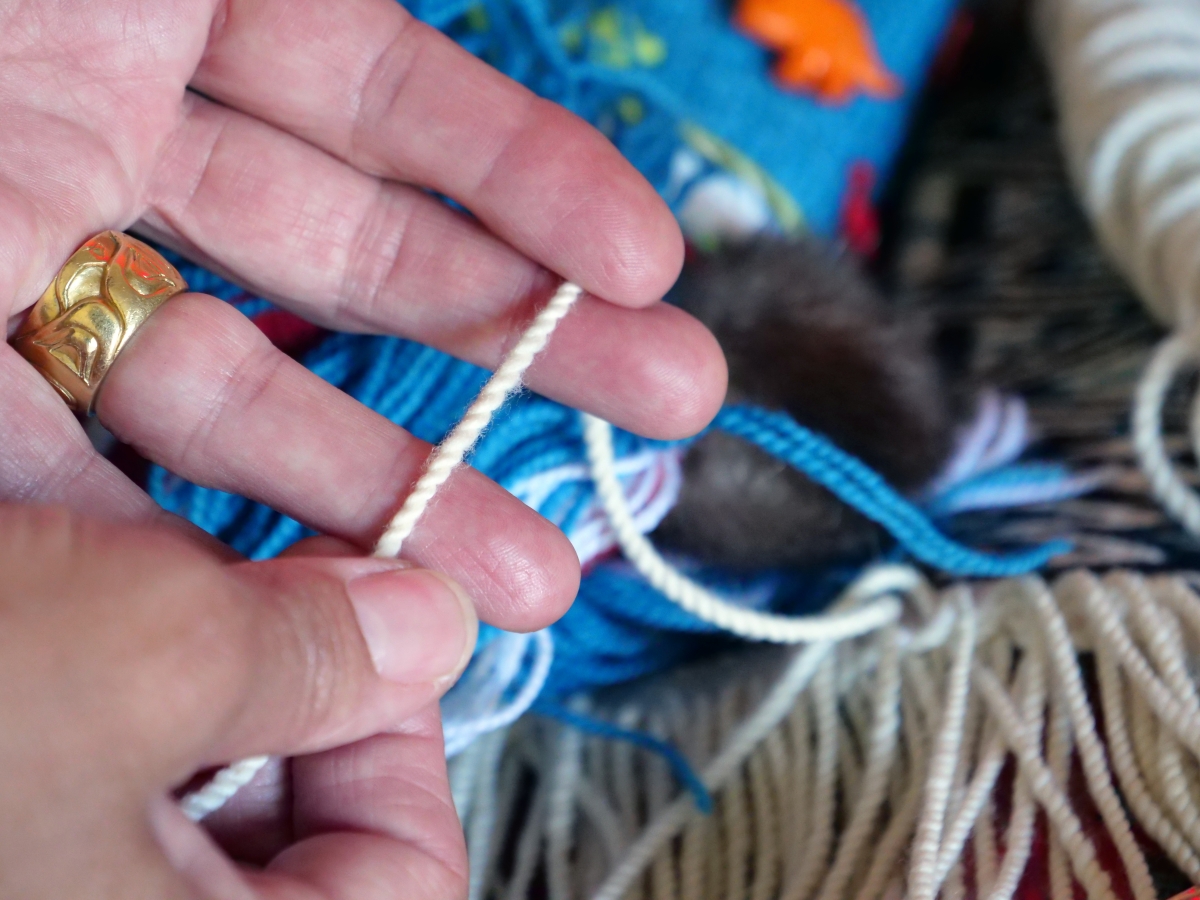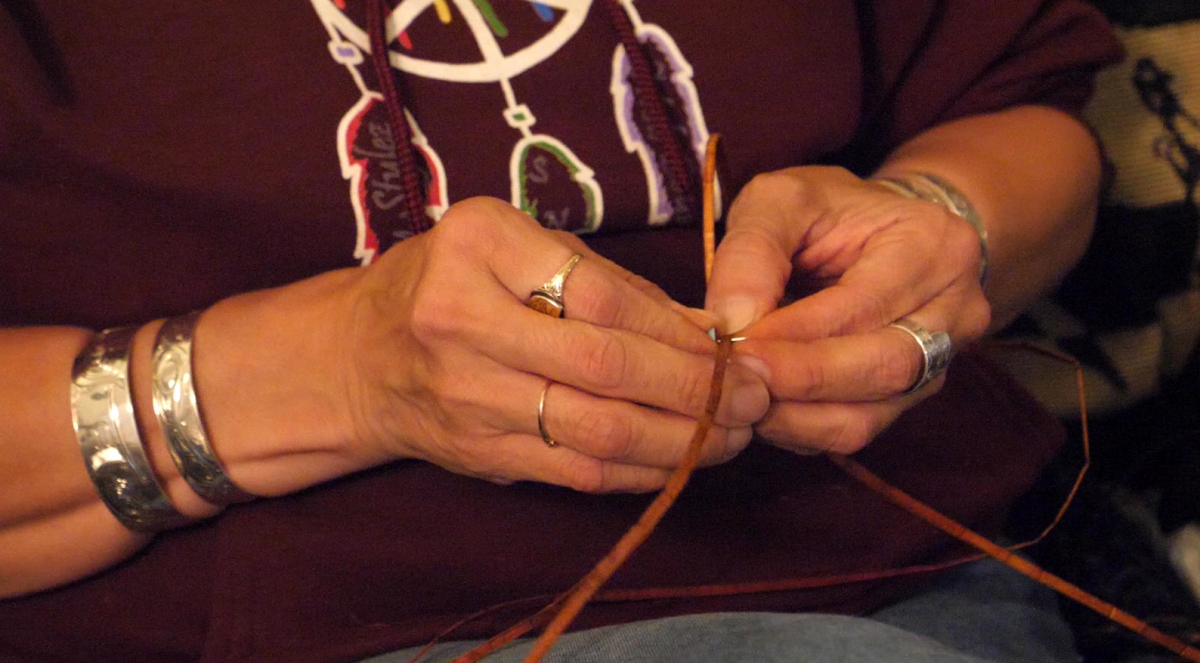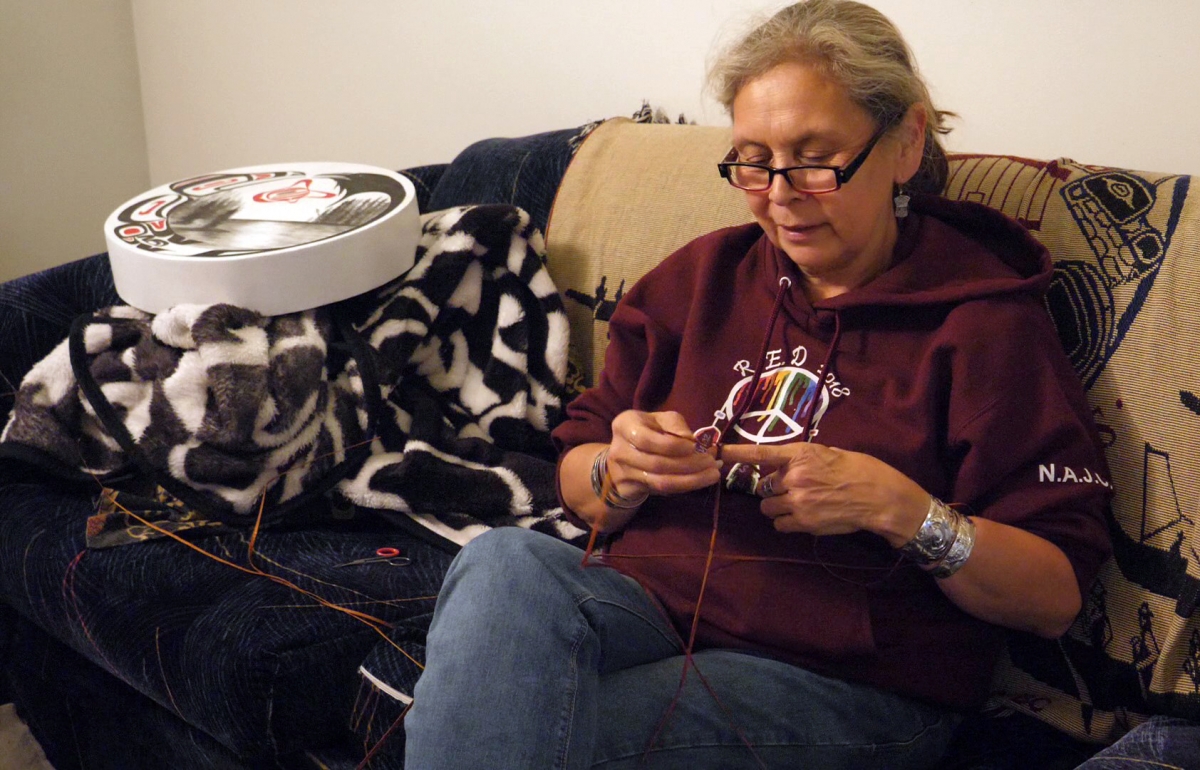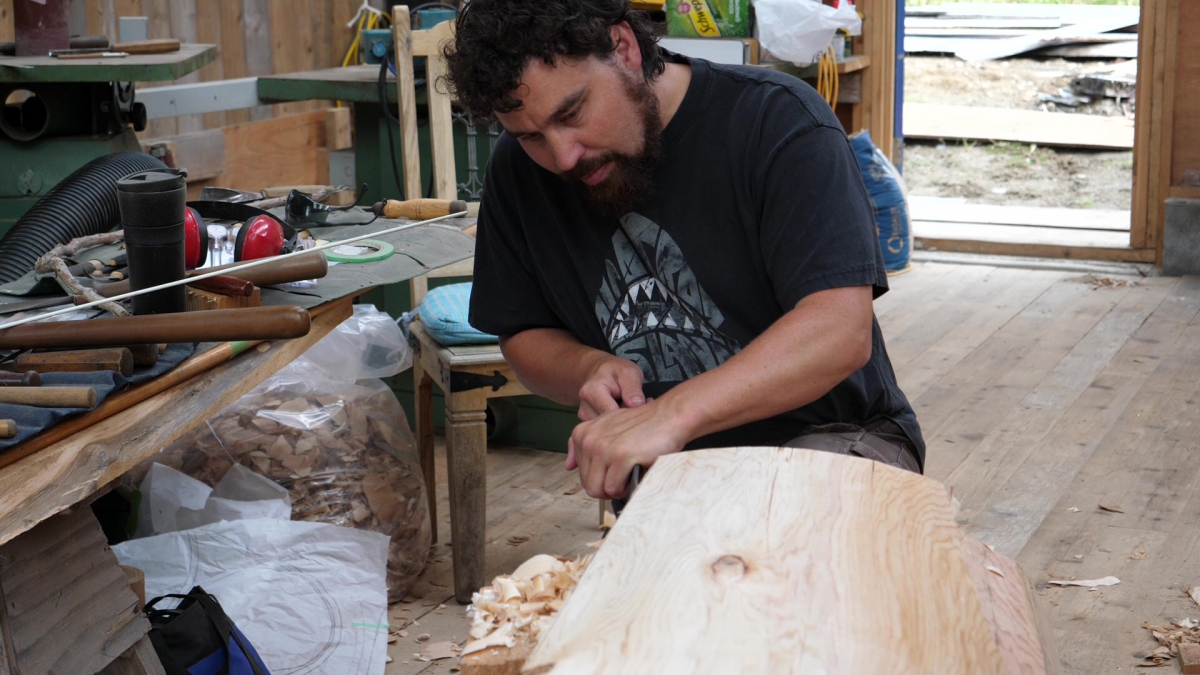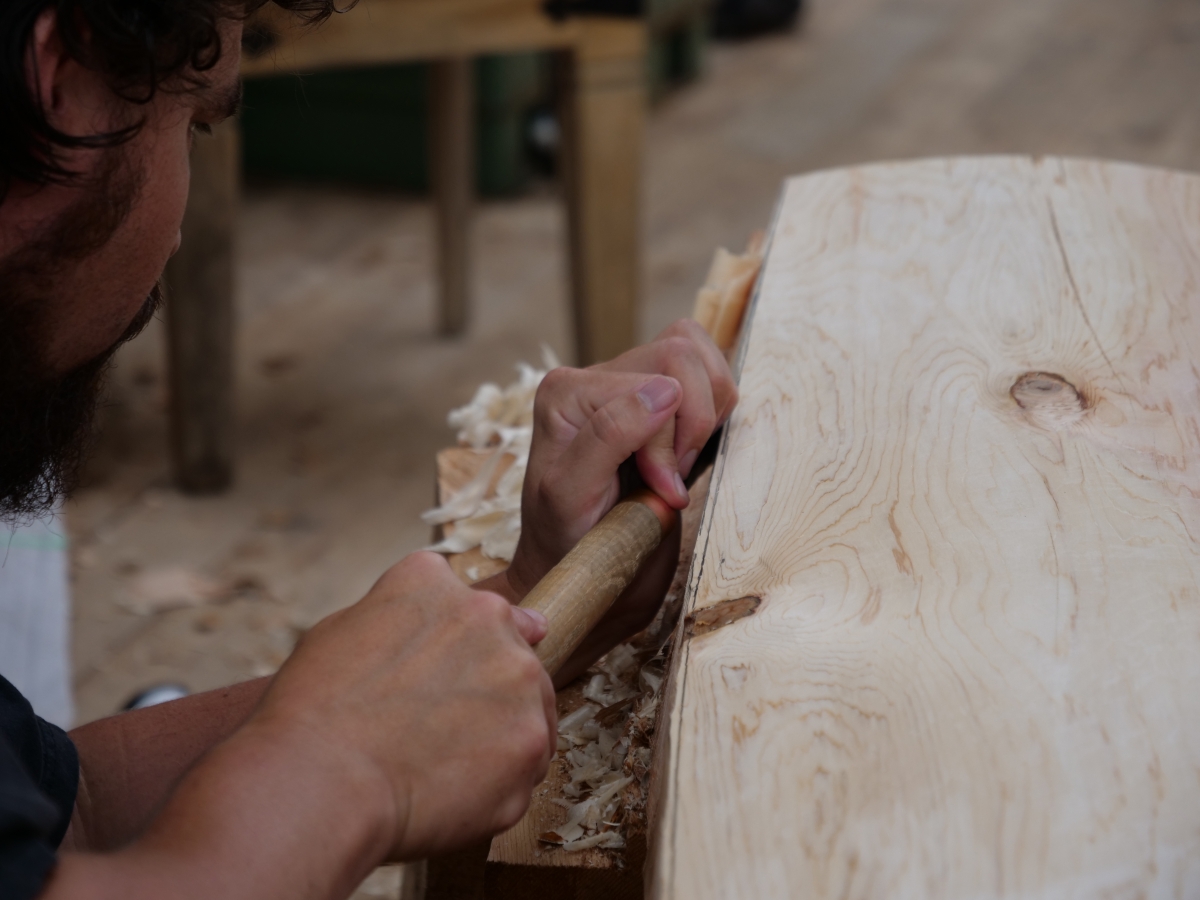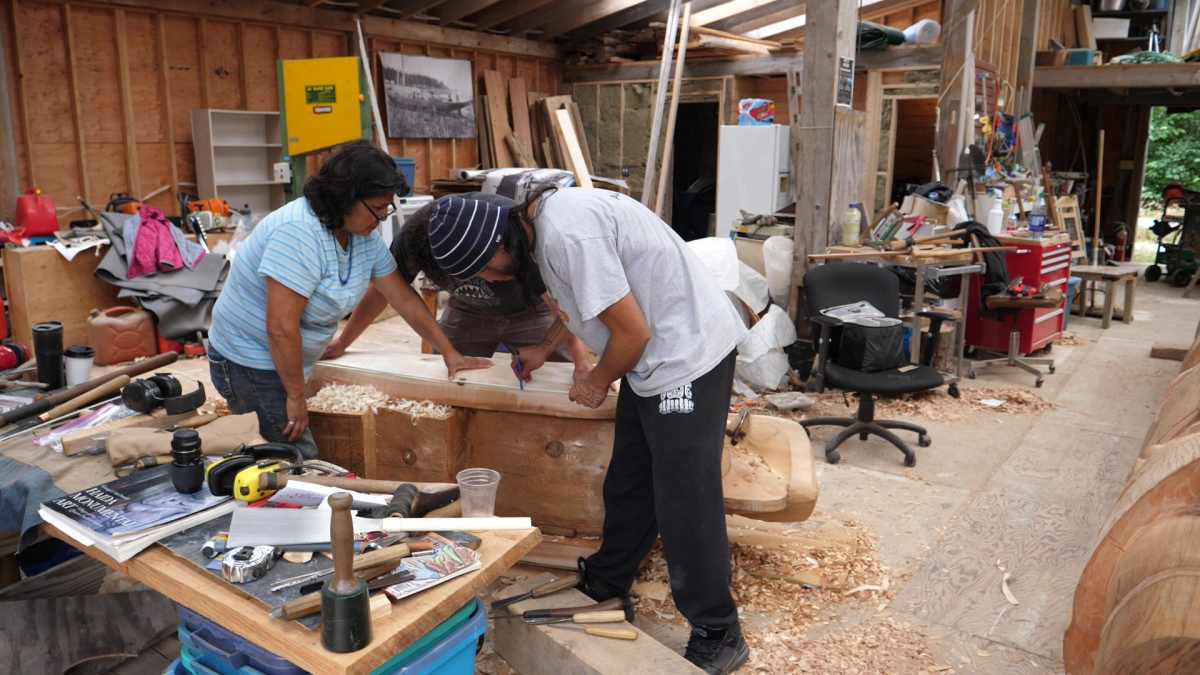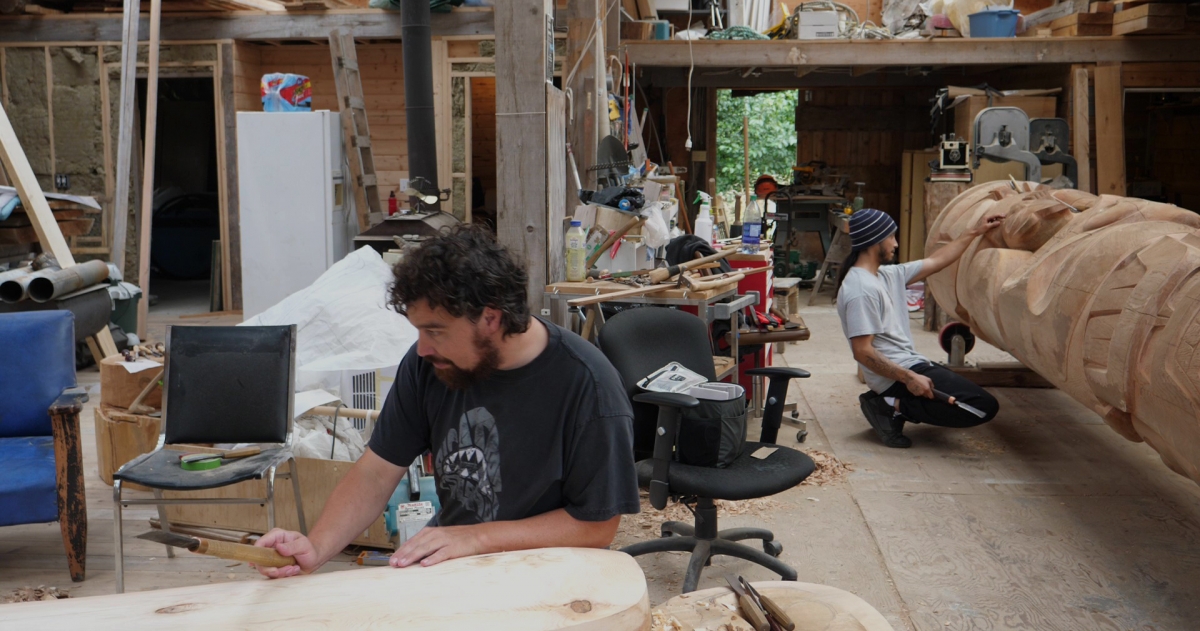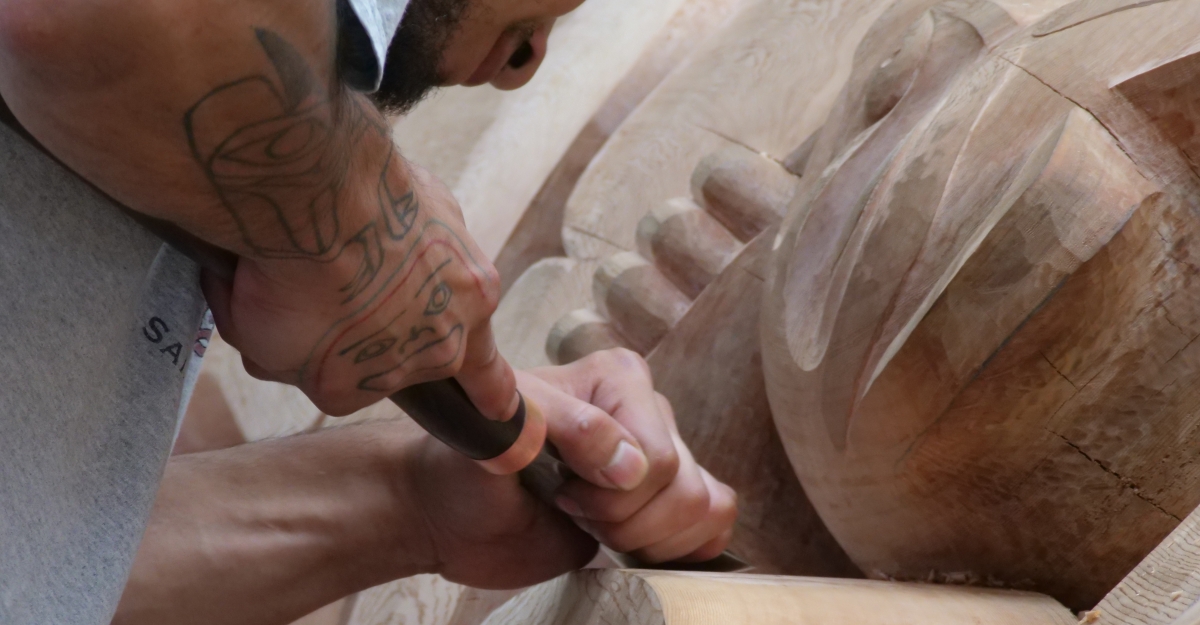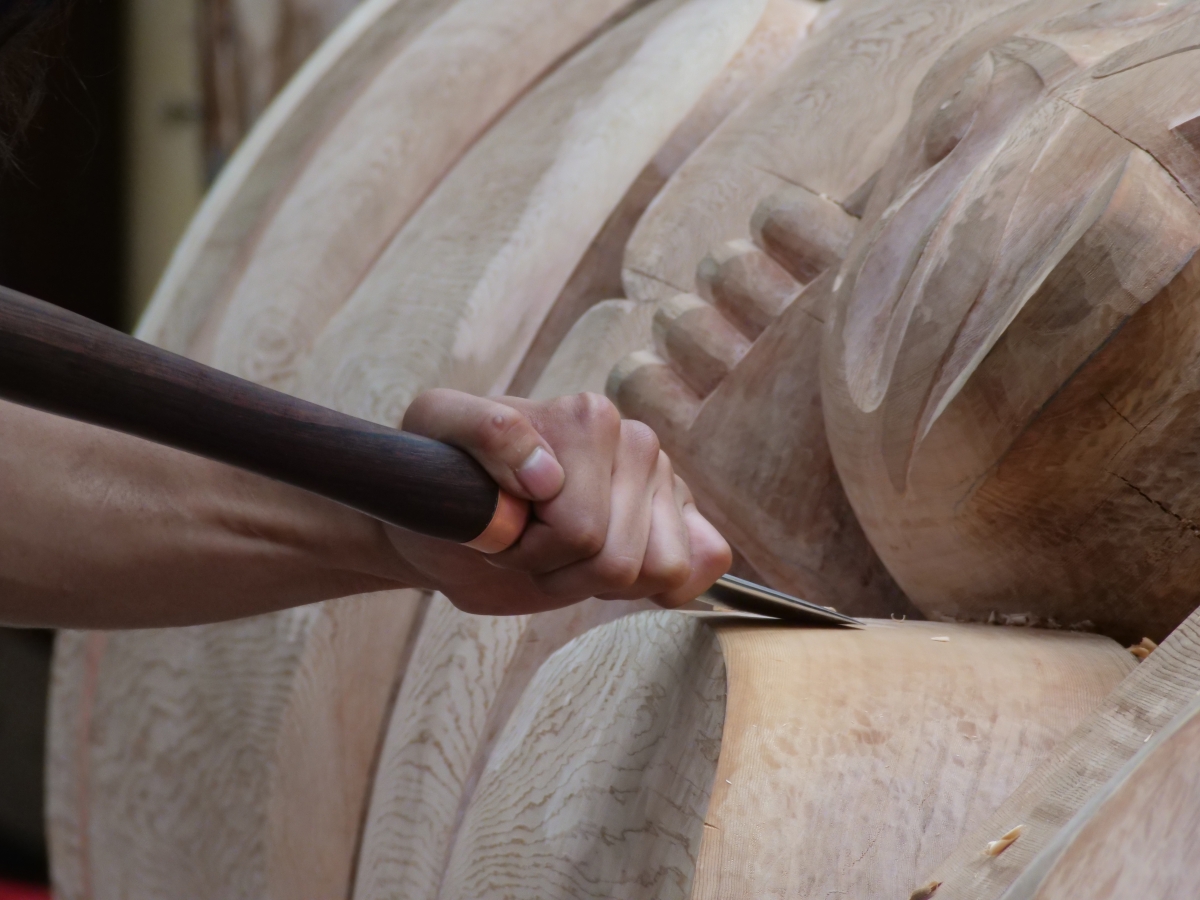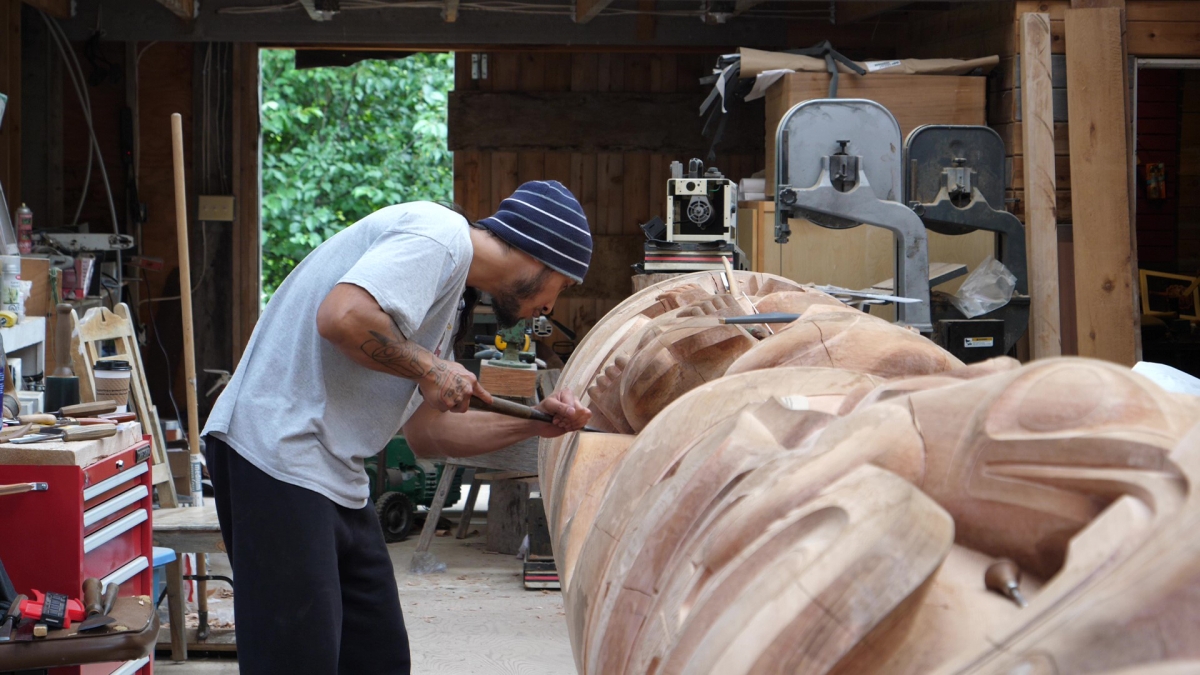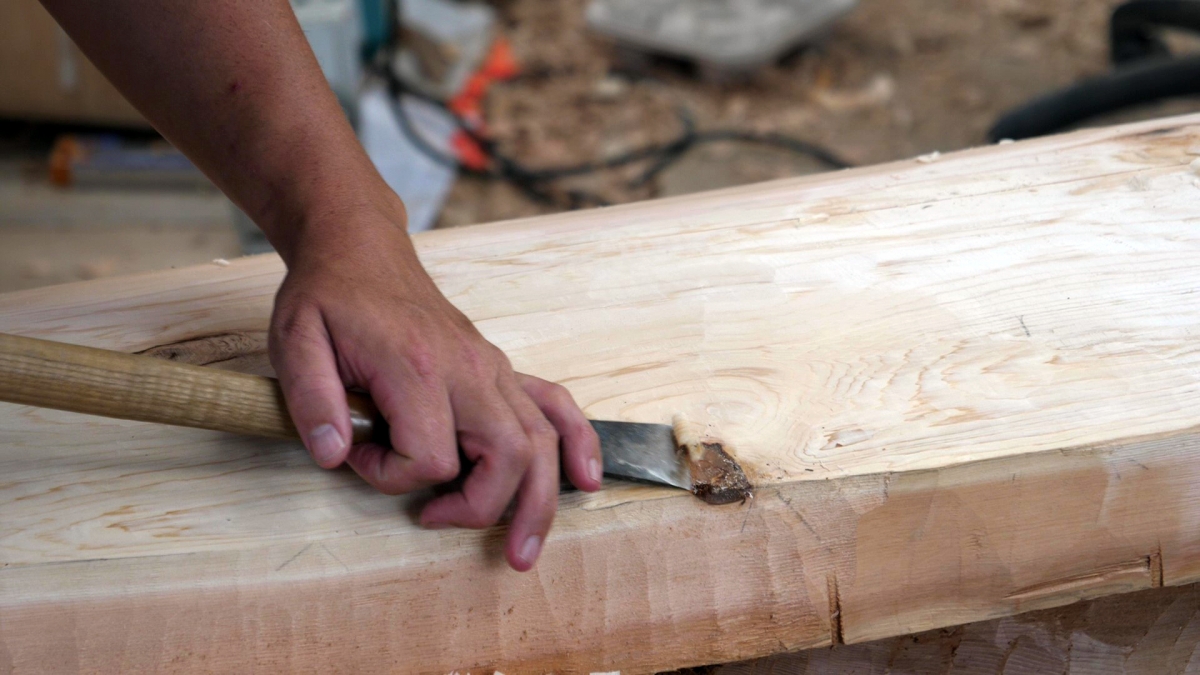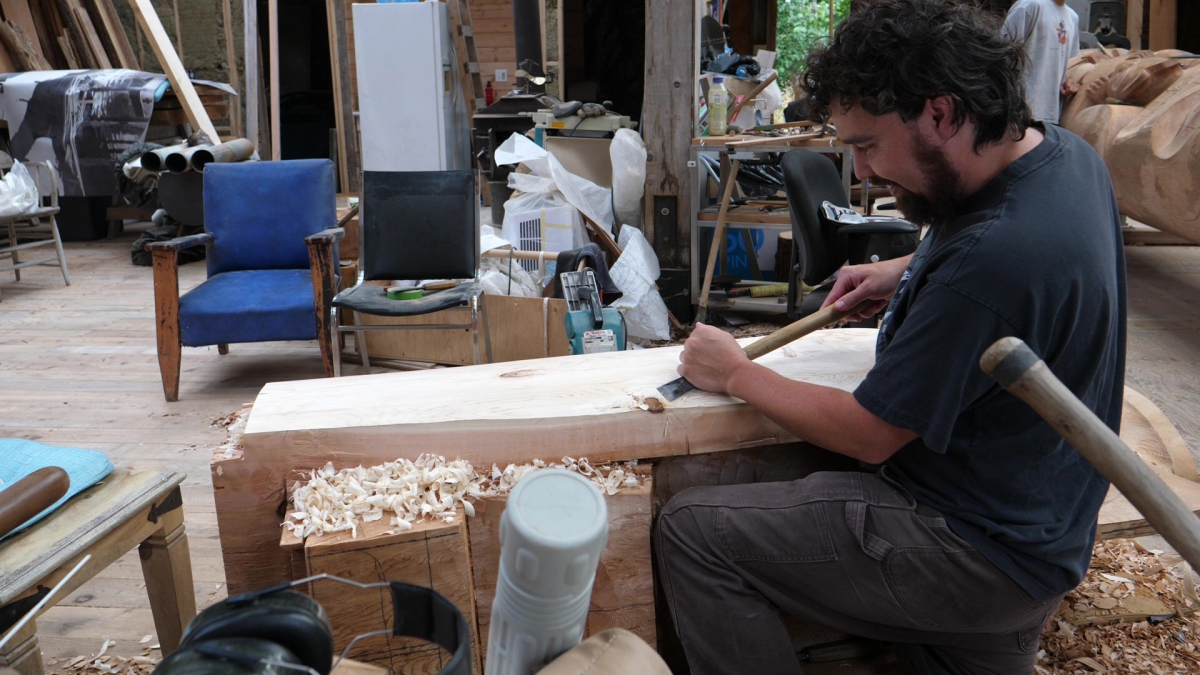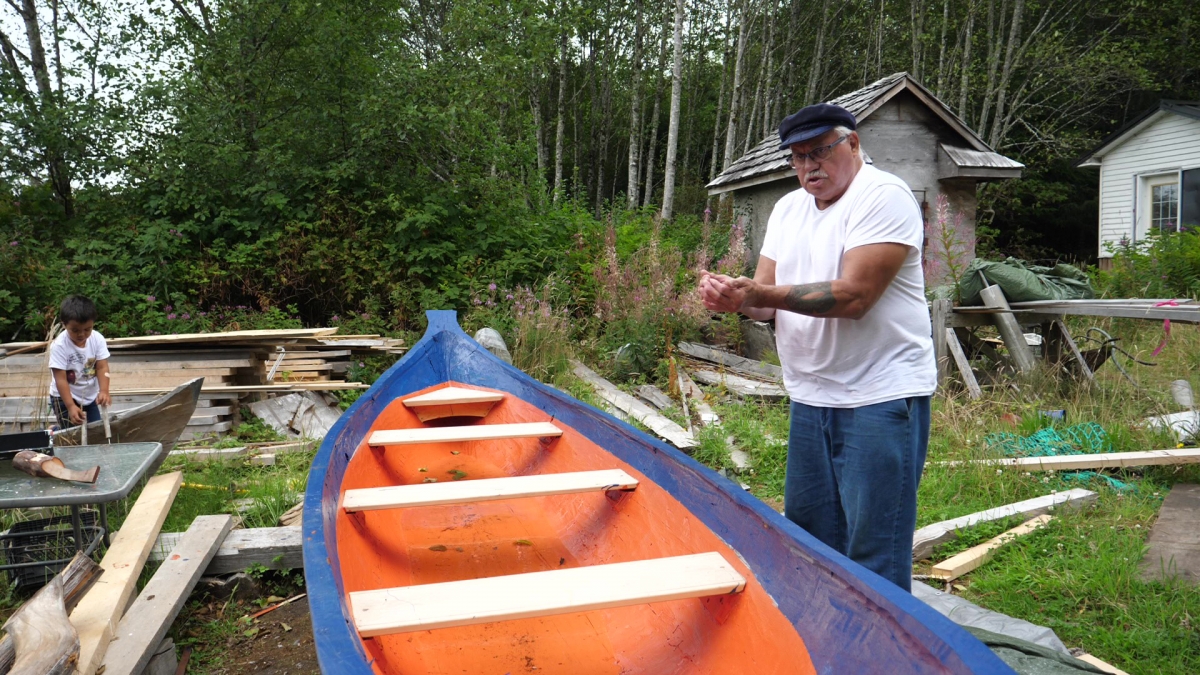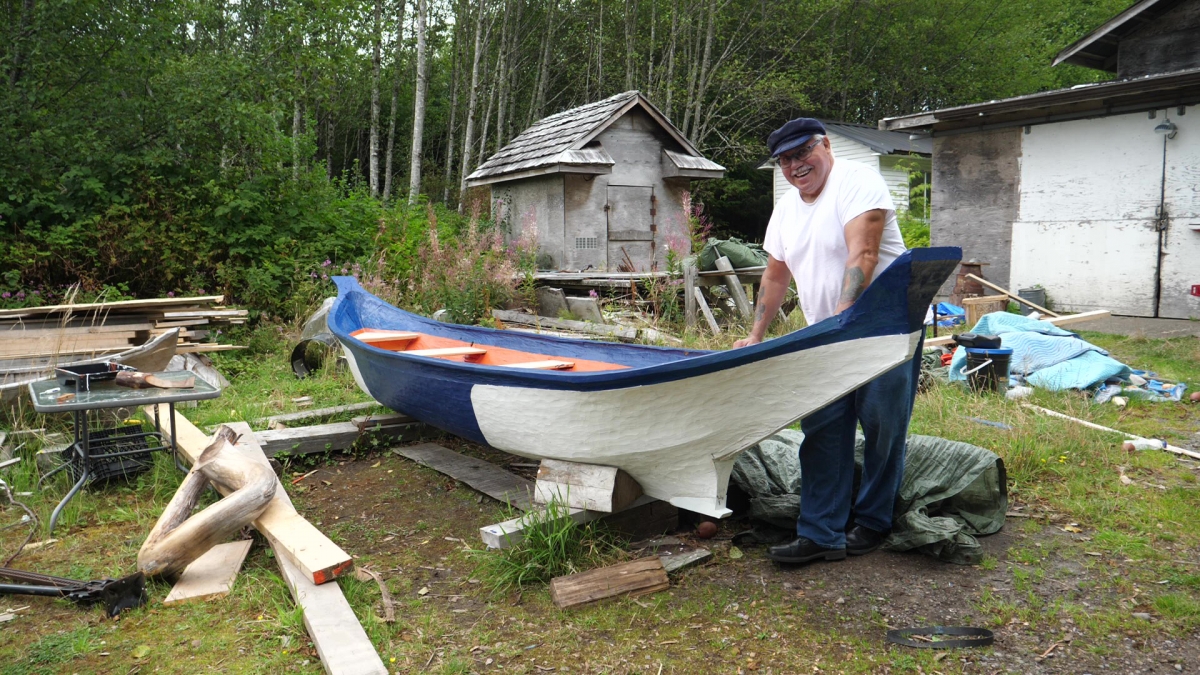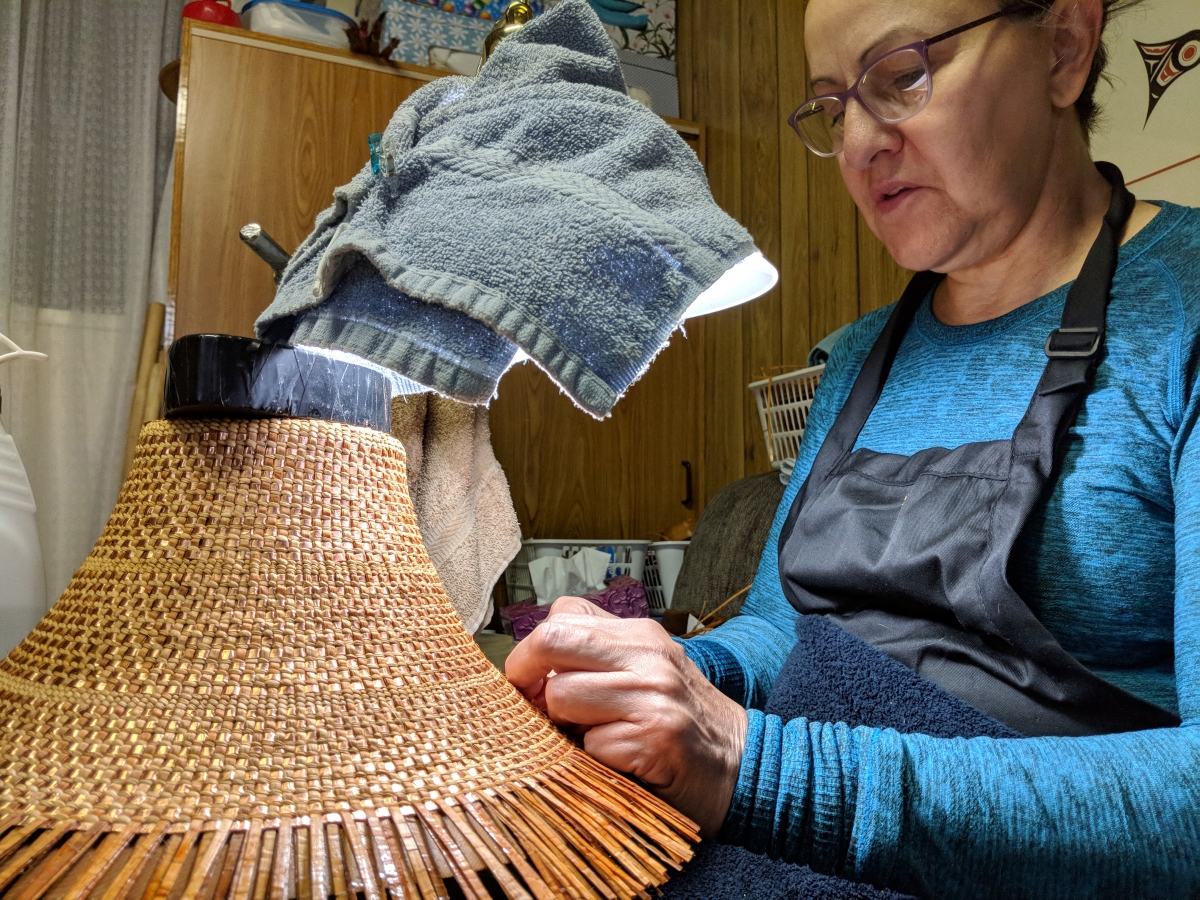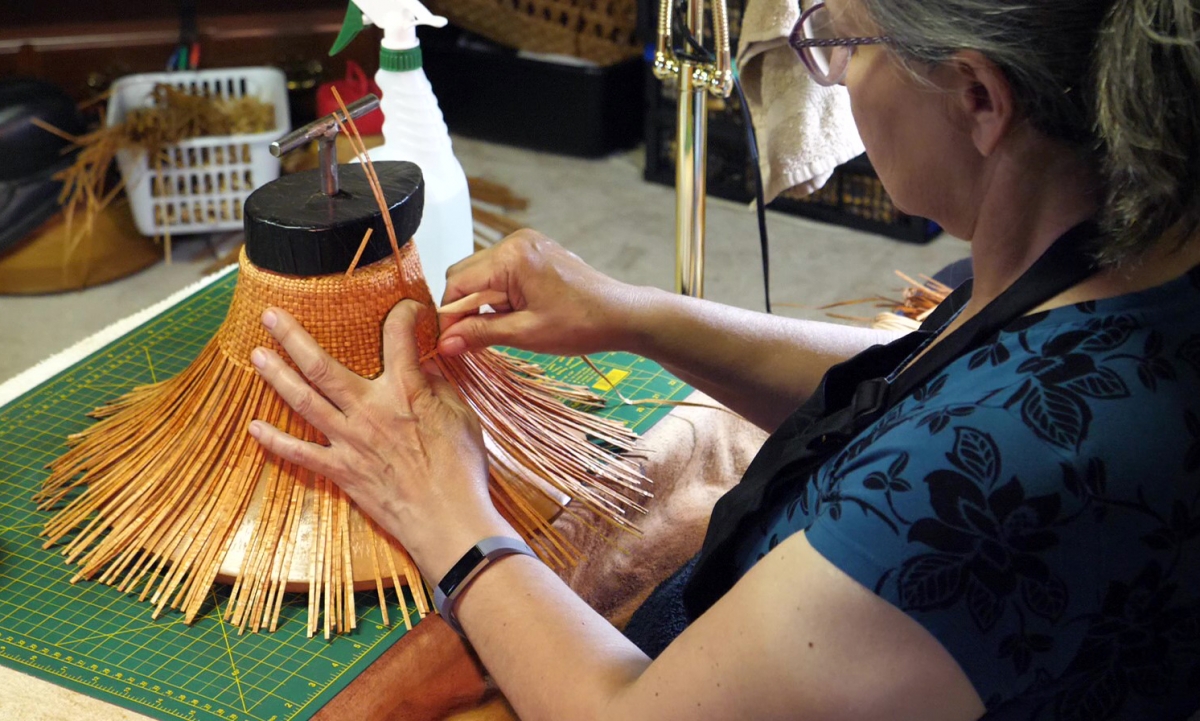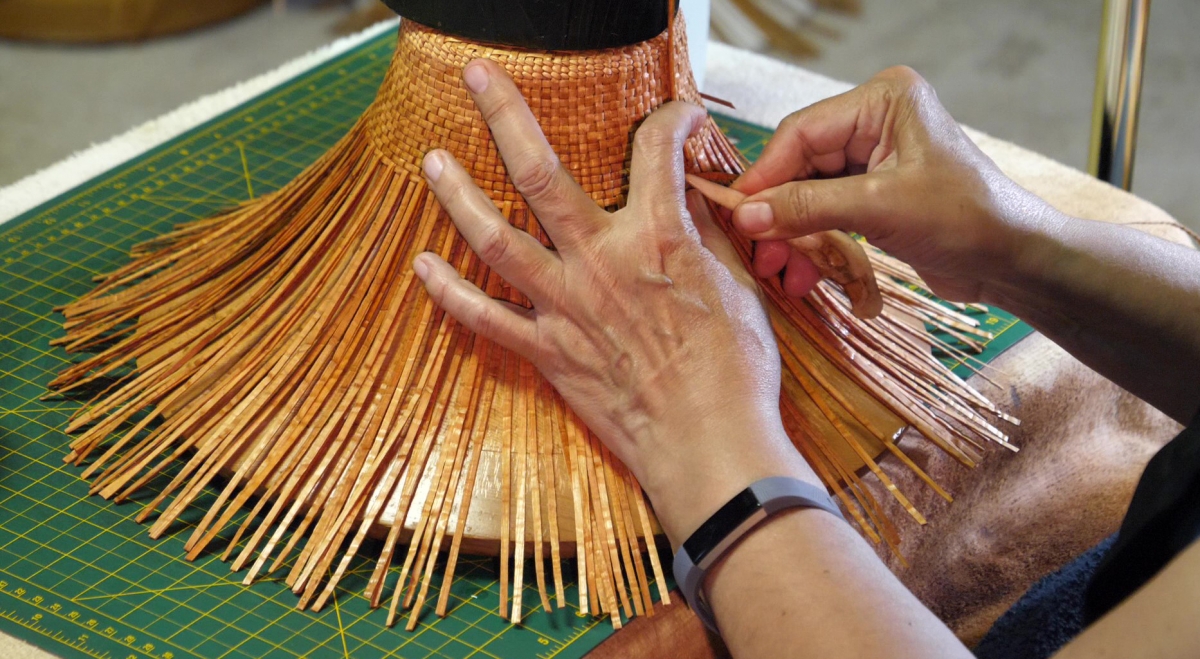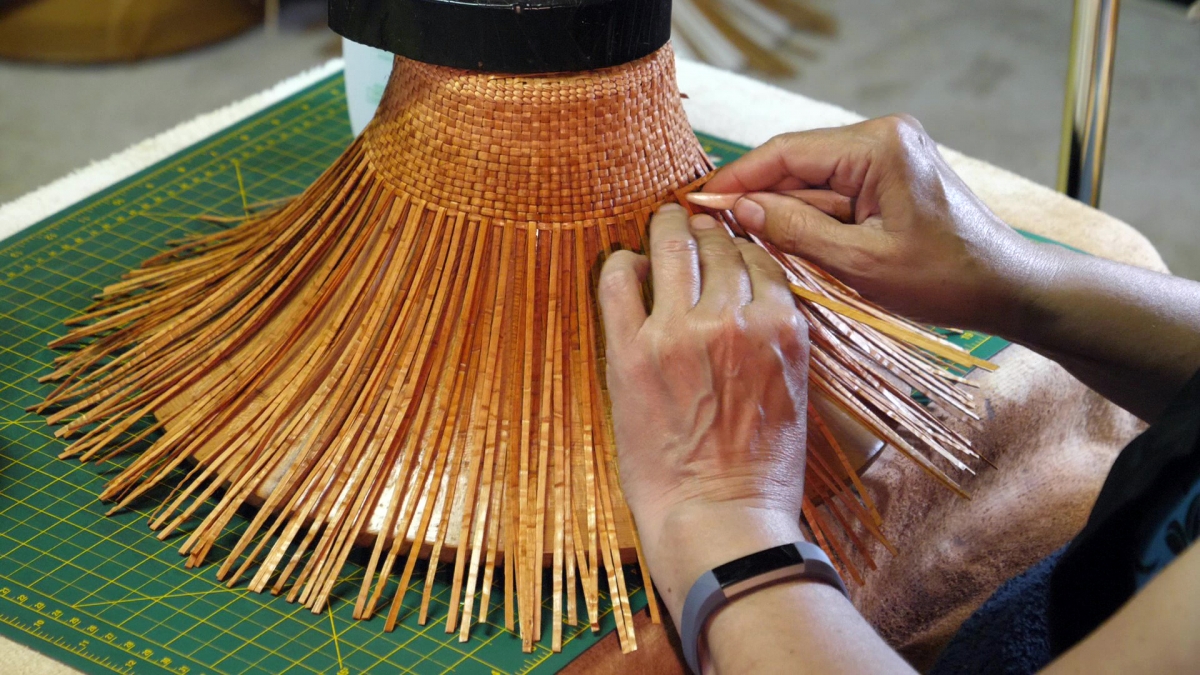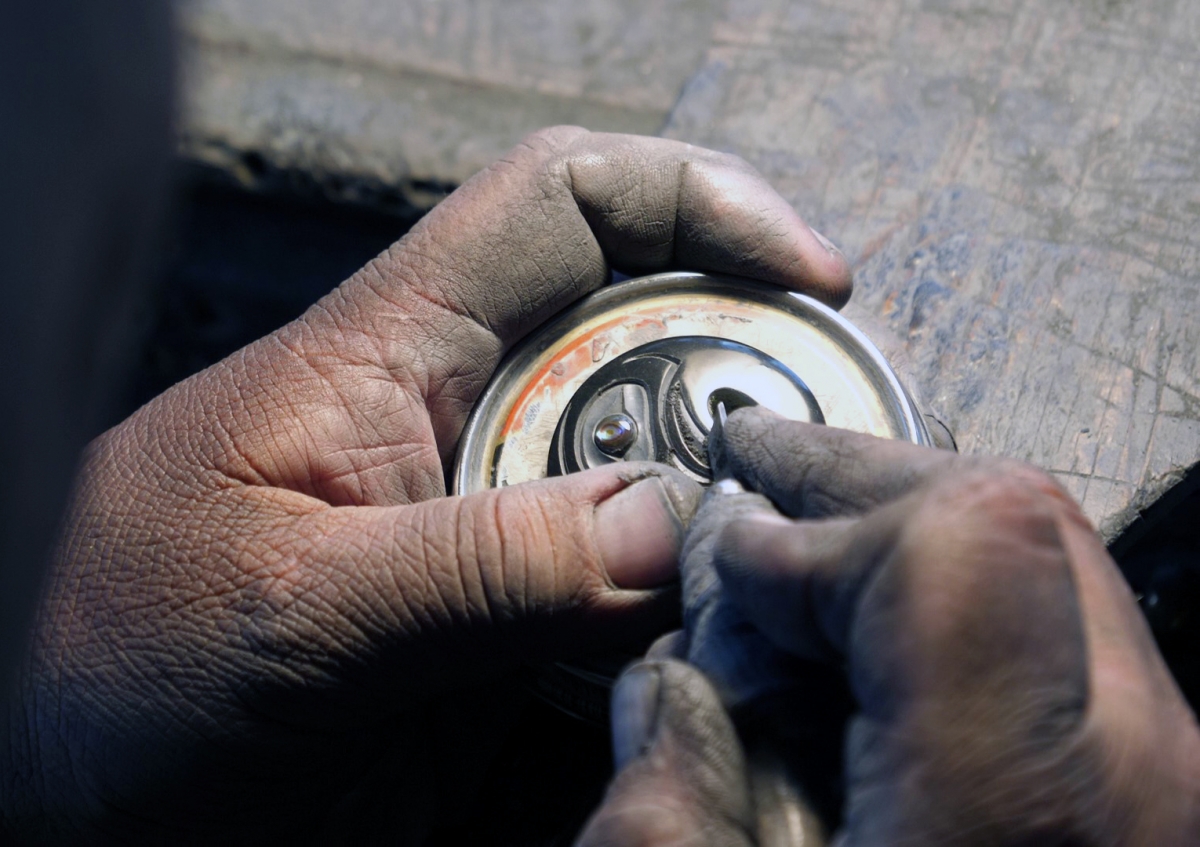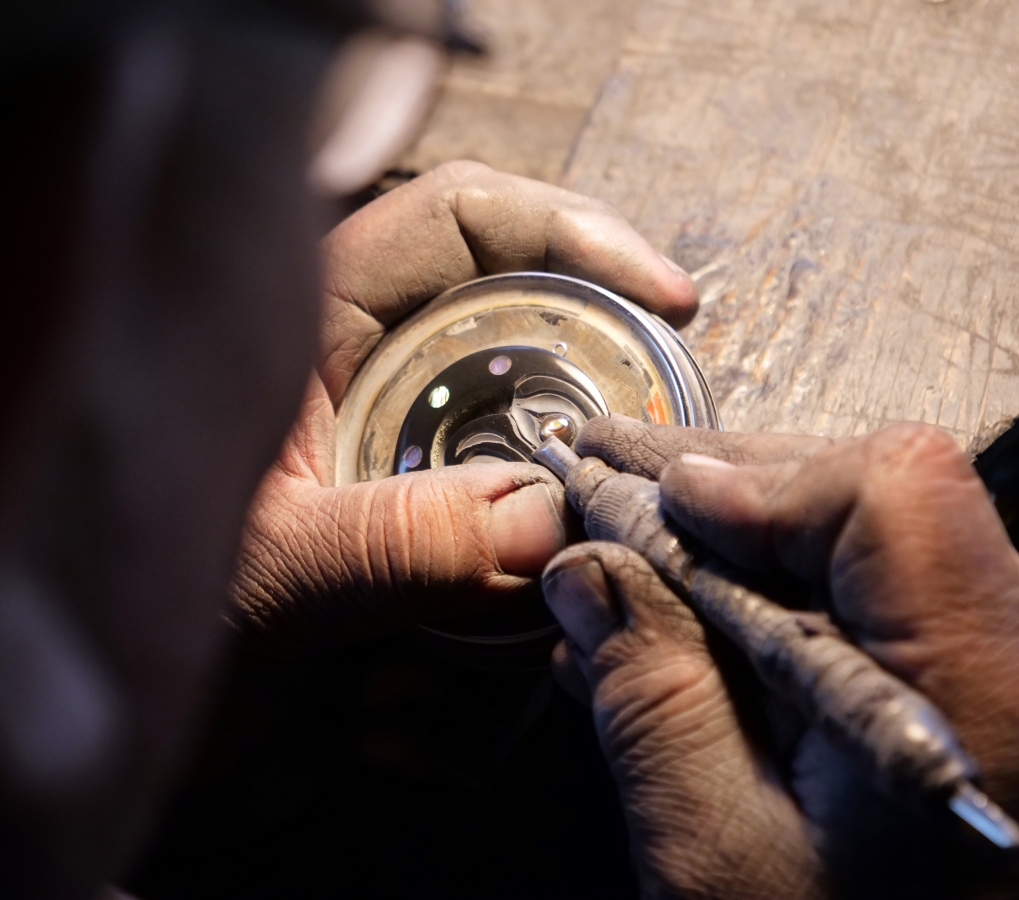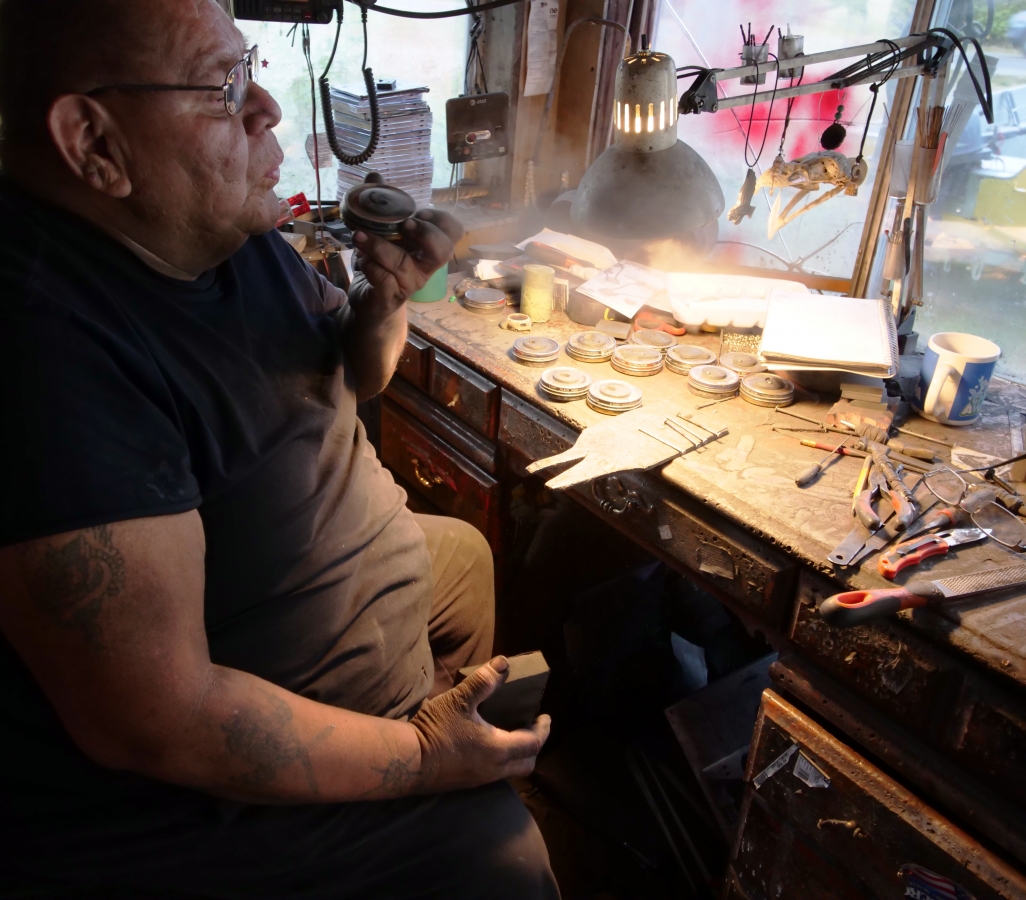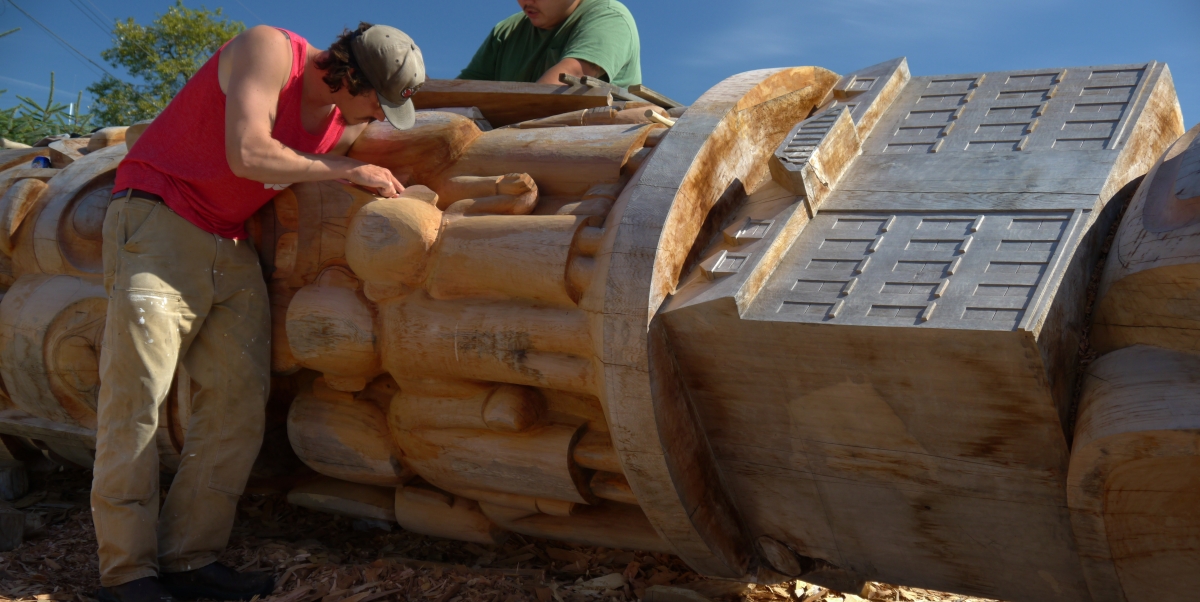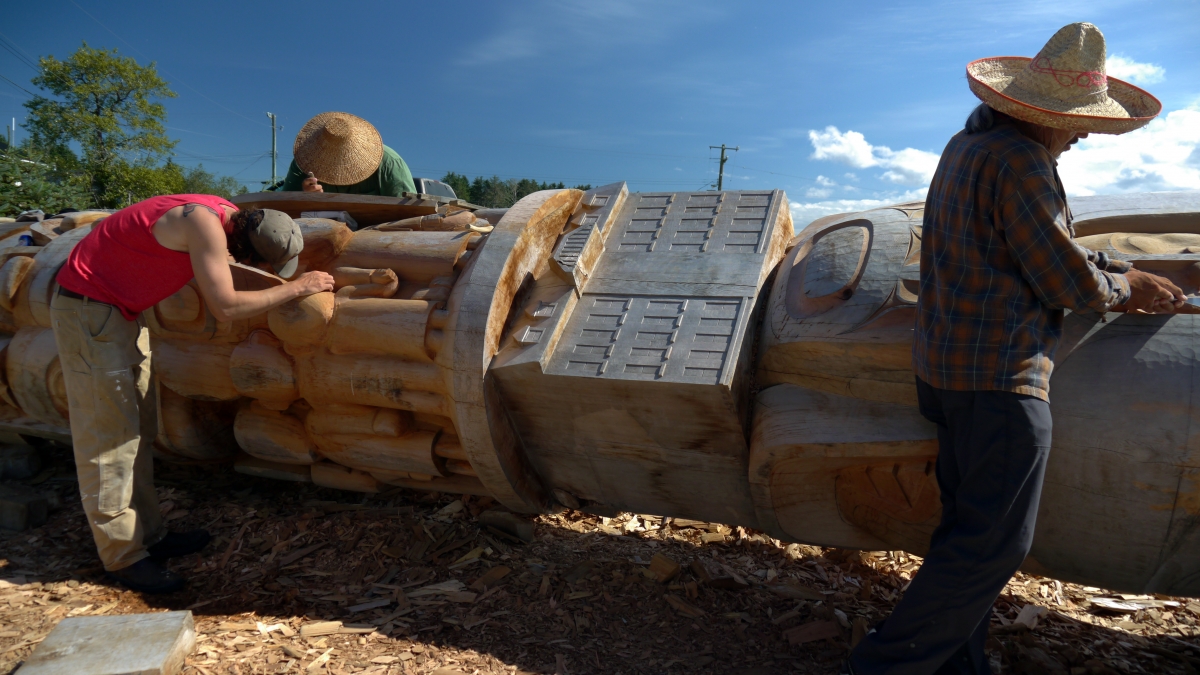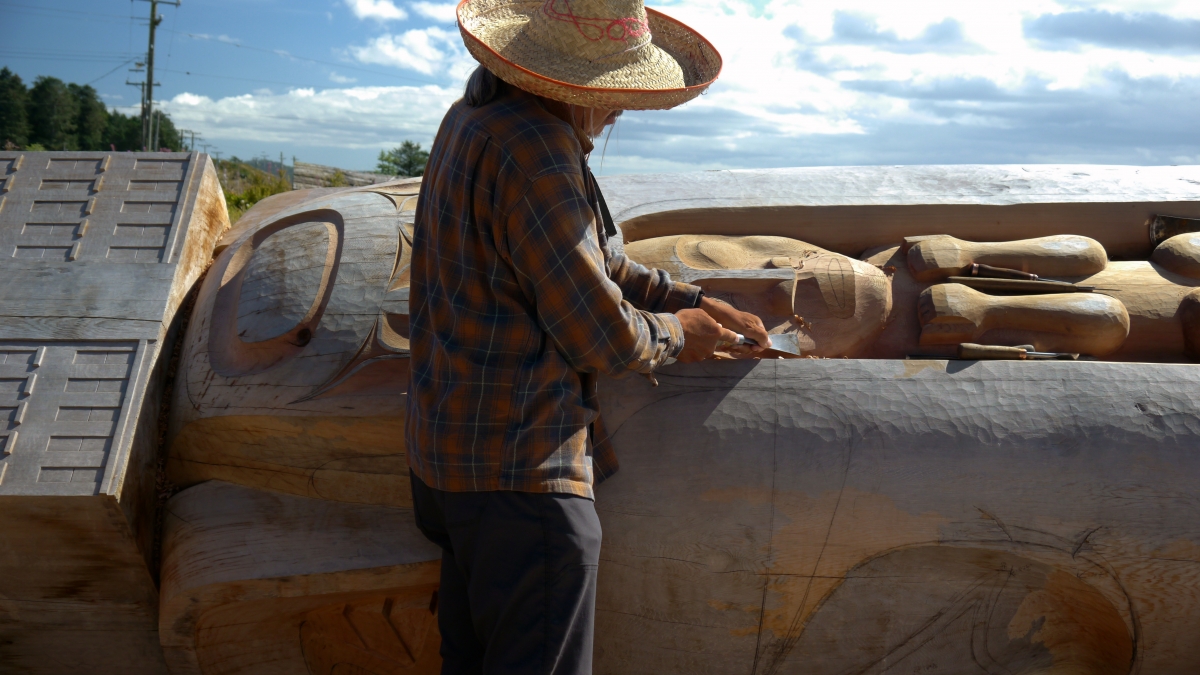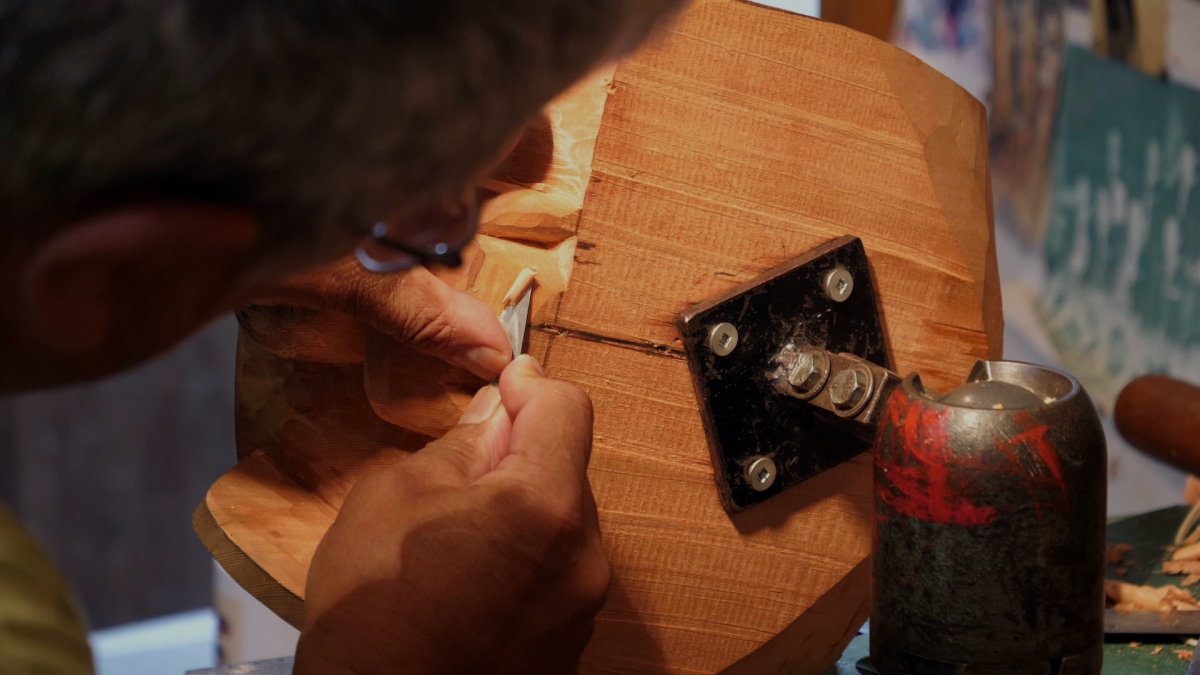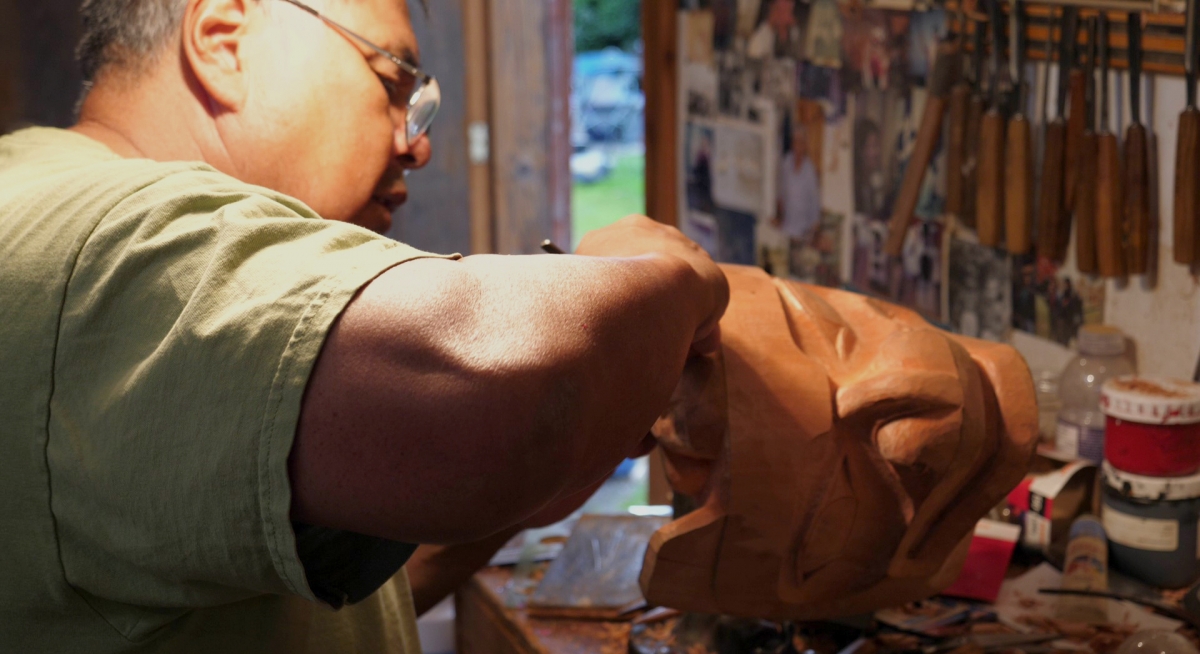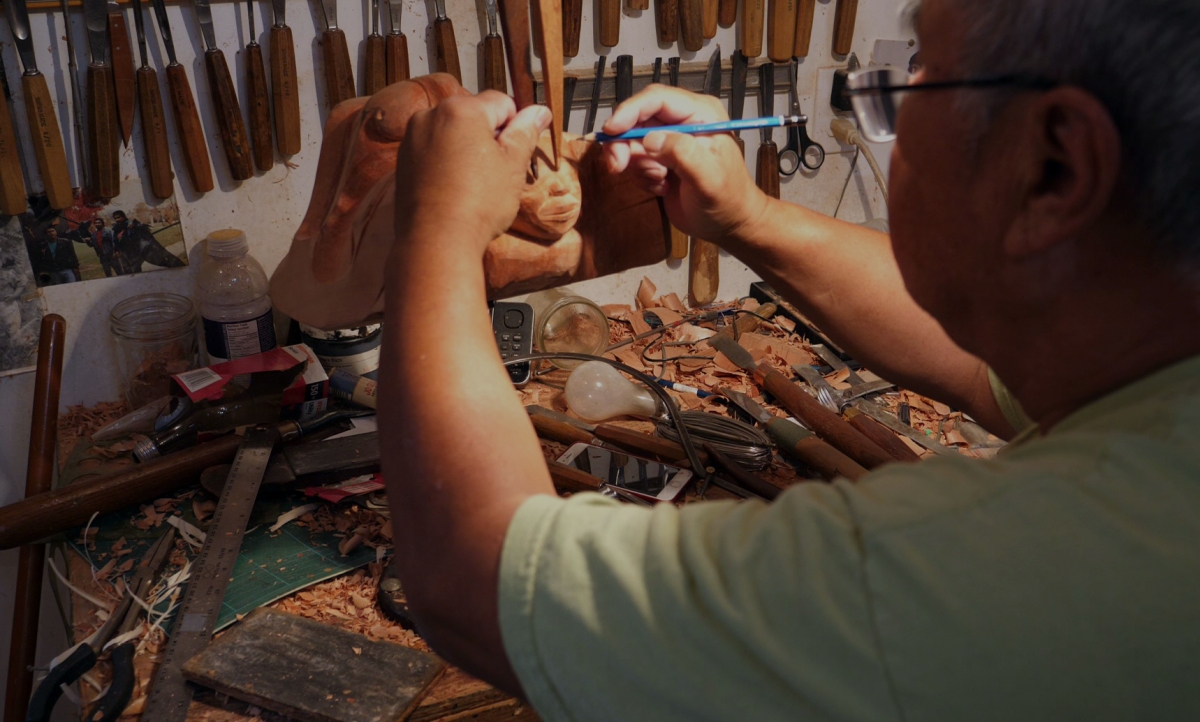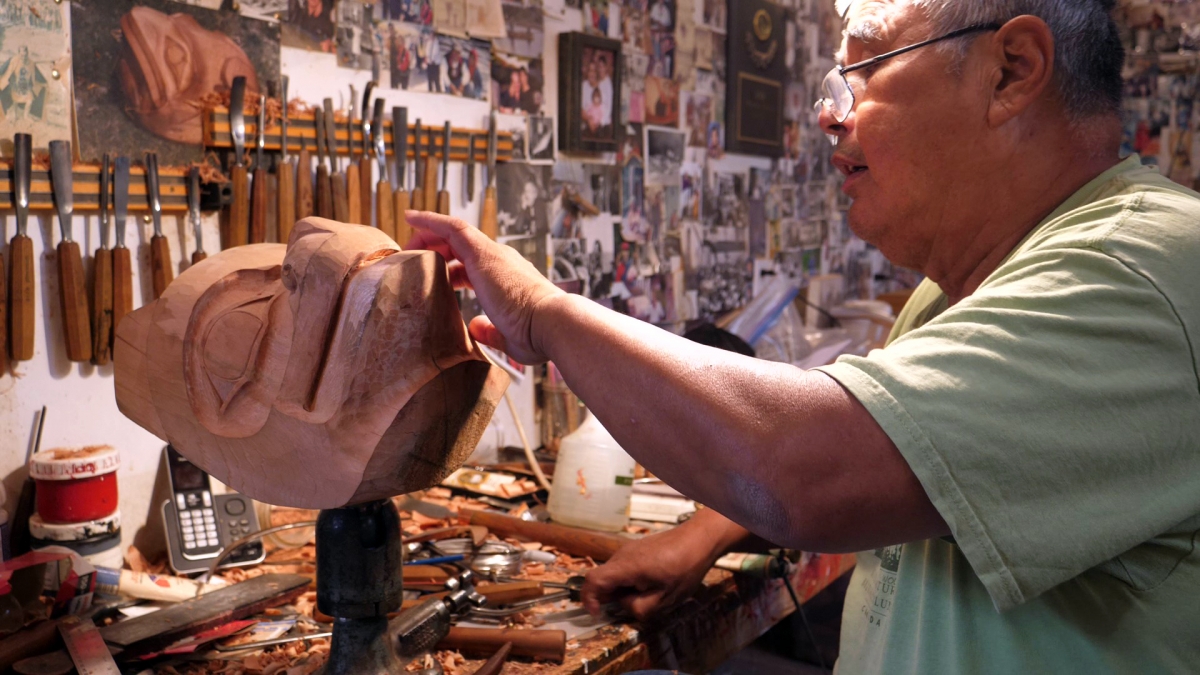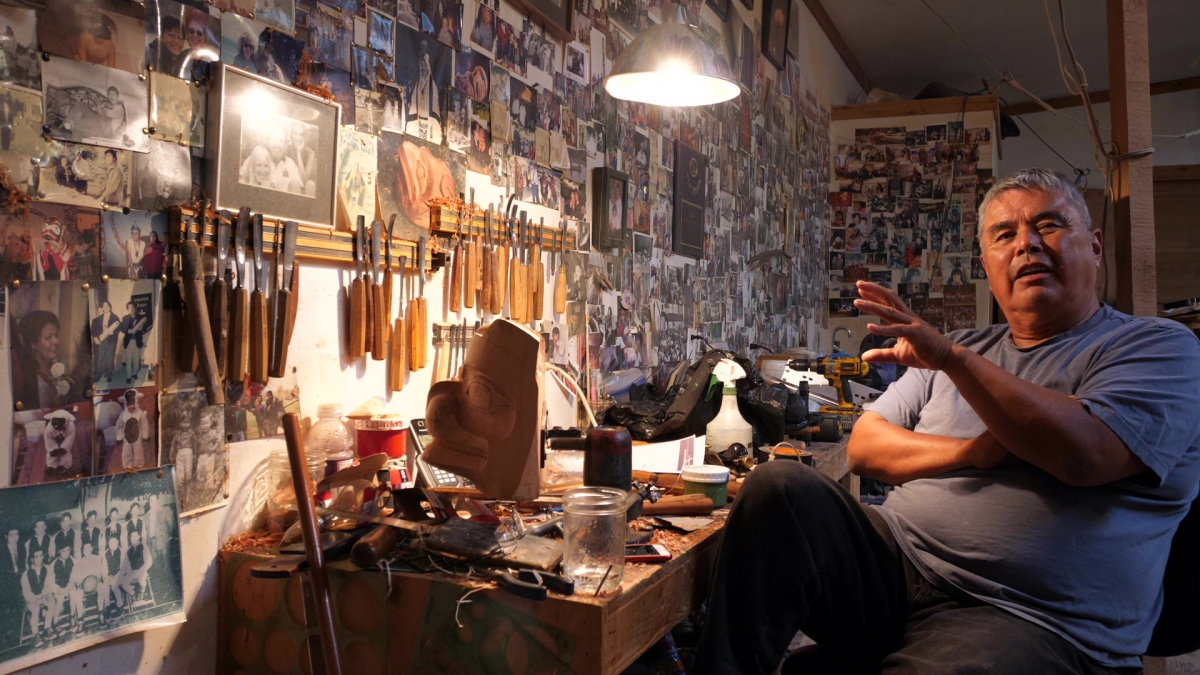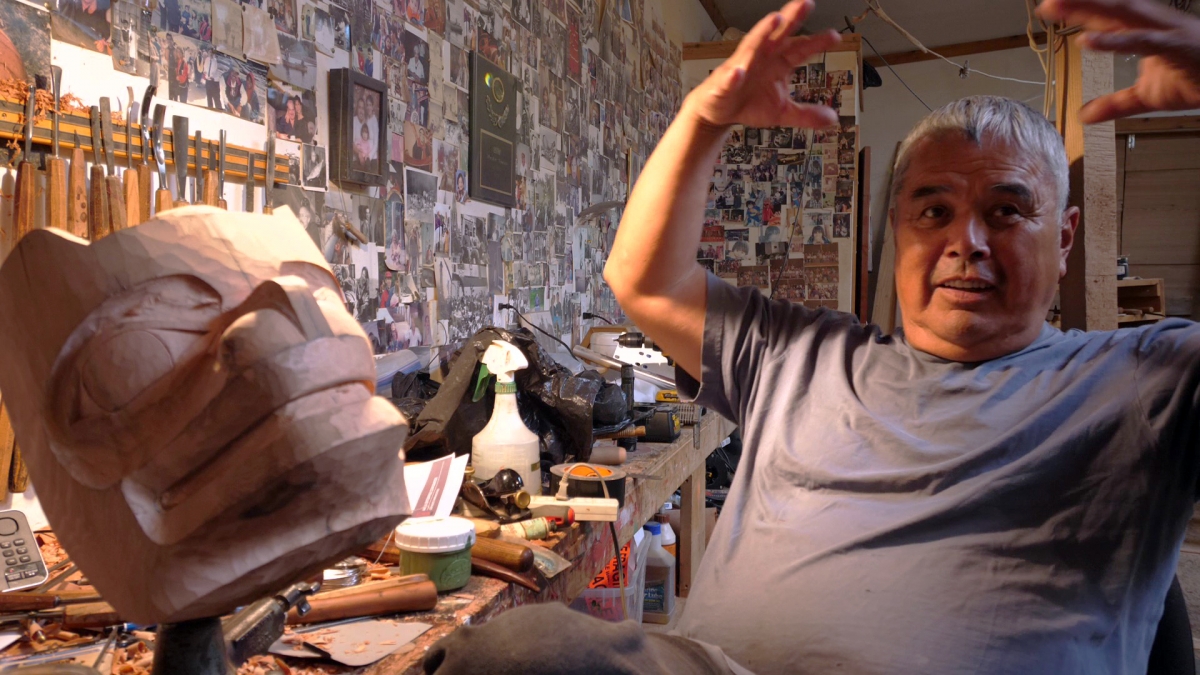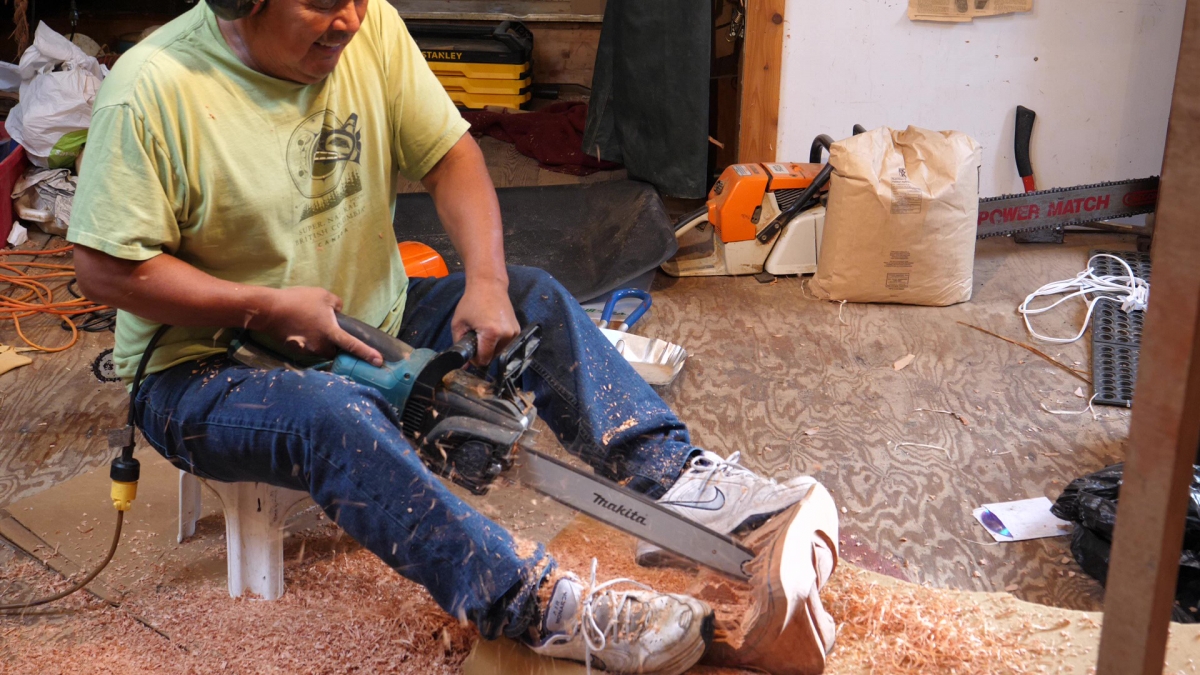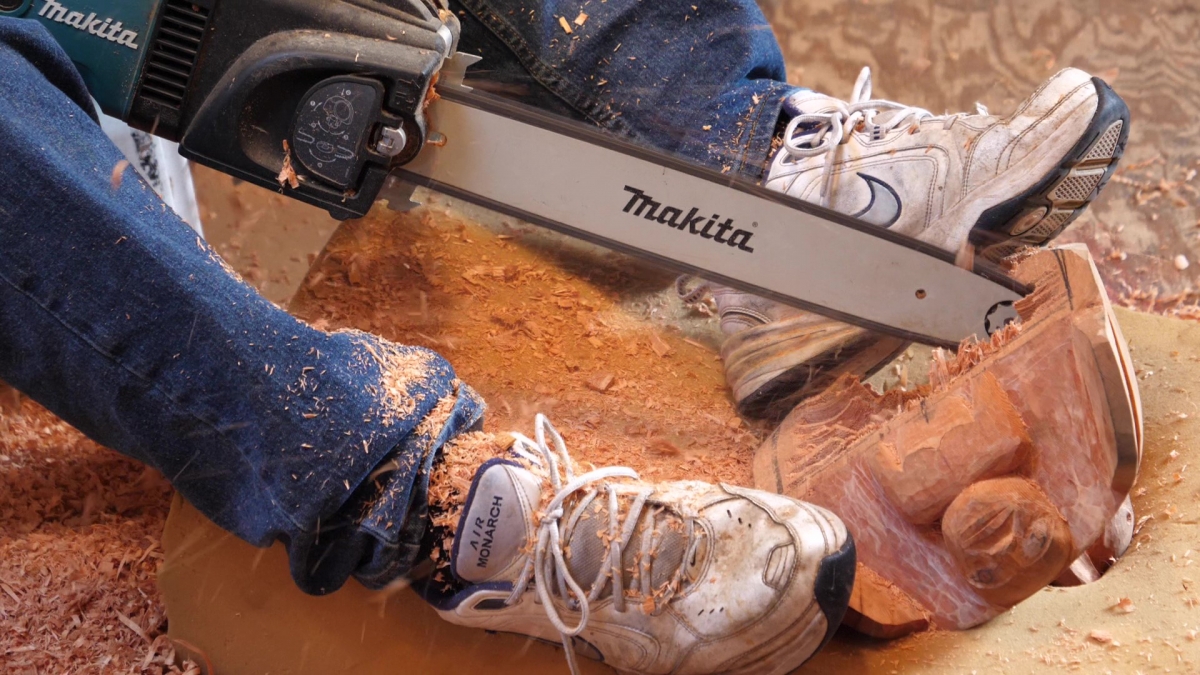The traditional territories of the Haida people are in northwest British Columbia (Canada) and and southwest Alaska (USA), primarily centered on the islands of Haida Gwaii. Haida Gwaii once had numerous villages scattered around the islands, mostly at river mouths rich in food resources. Together these communities represented a powerful political and economic force with trade relations up and down the coast with a permanent trading post set up in the area of what is now Victoria. The Haida, however, lost 90% of their people in the mid 1800s to diseases intentionally introduced by European settlers wanting to take the resources the Haida controlled. Since then most of the villages have been abandoned, with Haida either moving tow one of the two remaining village sites of Old Masset and Skidegate on Haida Gwaii or to communities throughout the rest of BC. Haida culture was further attacked by Canada via many decades of cultural suppression, with traditional community and governance practices outlawed until the mid 1900s. The last of the residential schools, where children would be abducted from their families to have their language and culture beaten out of them in a process of forced assimilation, was only closed in the 1990s.
The Haida, however, maintained much of their culture and governance in secret. The Haida have in the last decades been experiencing a revival and strengthening of culture and have been gaining political power. The Haida are well-known for the direct action resistance campaigns against clear-cut logging, which succeeded in creating landmark protections for much of Haida Gwaii and shared provincial/Haida control over 1/3 of the island as the protected park of Gwaii Haanas. There is still a long way to go, with many complaining that the majority of Haida victories are cosmetic with “a seat at the table” having been gained over land resource decisions, but in a context of majority rules where the Haida are a minority voice and the majority votes as a block. Abusive and illegal logging continues on Haida Gwaii with only industry self-monitoring, economically meaningless fines, and no resources provided for enforcement. But still the Haida continue to consolidate power, and rights and title cases continue through the courts which have the potential to generate radical change.
Most of my research in northern BC has to do with First Nations governance and activism in relationship to environmental defense, but a central part of First Nations identity, and particularly Haida identity, is in artistic practices: mask carving, the monumental art of pole carving, weaving of wool, cedar bark, and spruce root, and boat building to name a few. These practices continued through the period of overt cultural suppression and have in the last decades been seeing a profound resurgence. While the regional artistic traditions are well known to art collectors and anthropologists and are easily recognized by people around the world, the tradition of Haida art is probably known the best, with Haida carvings to be found in museums and private collections around the world.
Riding around the town of Old Masset, it is remarkable how many artists’ studios and carving sheds there are! The Haida have been trading their art with other communities since well before European contact. However, starting with early anthropological collectors trading for (and sometimes less ethically stealing) art for European markets, there has developed a large international market for their work. The feedback of traditional practice and market demand has led to a culture where artists can invest time and energy into developing their skills to a remarkable level, working in traditional forms with traditional materials, but also continuing to develop their work in new directions with new media.
The photos and video stills in this series are from video shoots of Haida artists in Old Masset at work. I’m hoping to work on the video footage over the next months to create films that capture a feel of the art-making culture in Haida society. Artists included in this series include pole carvers Jim Hart (Lidansuu), Gwaliga Hart, Jaalen Edenshaw, and Tyler York, mask carvers Reg Davidson , Jordon Seward, raven’s tail weaver (wool and furs) Georgia Bennett, cedar bark weavers Marlene Liddle and Goldie Swanson, argillite stone carver Myles Edgars, and canoe carver John Bennett. Also, while I am providing here links to some of these Haida artists’ work, i should also include here a link to Edge of the Knife, the new feature length film done entirely in the Haida language co-written by Jaalen Edenshaw, his brother Gwai Edenshaw, Graham Richard and Leonie Sandercock, which just premiered on Haida Gwaii and will soon be touring film festivals around the world. The pole that Jim Hart and his son Gwaliga were working on (summer 2016) was The Reconciliation Pole, commissioned by UBC to tell the story of indigenous/settler relations in British Columbia, from first contact through the times of disease, displacement, marginalization and land theft, through the horrors of the residential schools and the banning of First Nations culture and governance.
In addition to the videos i hope to work on on First Nations art practices, I’ll be taking the images and interviews i have gathered in my summer trip through northern BC to create short videos and articles about governance issues in the region and ongoing environmental fights throughout First Nations territories in BC. On Haida Gwaii, specifically, there are ongoing fights over horrendous clear-cut logging practices on Moresby Island. While many consider the logging practices permitted by Candadian law to be unsustainable and causing long term, irreparable environmental damage, the companies are only self-monitoring and business as usual appears to many to be to more or less ignore even these shallow restrictions. The poles in these photos being carved by Jim Hart and Jaalen Edenshaw are made from “monumental” red cedars. These monumentals are very old (around 200 years). It’s illegal to do to cut these trees without Haida permission, but the logging companies self monitor, and when found out, penalties are annoyances at most. They recently discovered on one cut block of the Husby logging company 120 of these monumentals downed where the company had reported only 3. After a few months of successful blockade of the logging, the court issued an injunction against the blockade, the land protectors withdrew, and Husby went back to logging. Haida surveyors, working for the Council of the Haida Nation, trying to get ahead of the logging in the area just last week found another 100 monumentals downed on the new cut block. Husby has clear cut over 350 cut blocks so far, and this is just one company. The Council of the Haida Nation is currently proceeding with a rights and title case in the federal courts which may eventually stop this kind of logging, but in the meantime, local community members, remain concerned and are considering other options.
(to see more information on the photos, including details on who is being photographed, click on the “Show Picture List” link, click on an individual photo and then click through for others as you like.)
Visual documentation supported by the Max Planck Institute for Evolutionary Anthropology, Department of Human Behavior, Ecology, and Culture, as well as through a National Science Foundation Doctoral Dissertation Improvement Grant.


